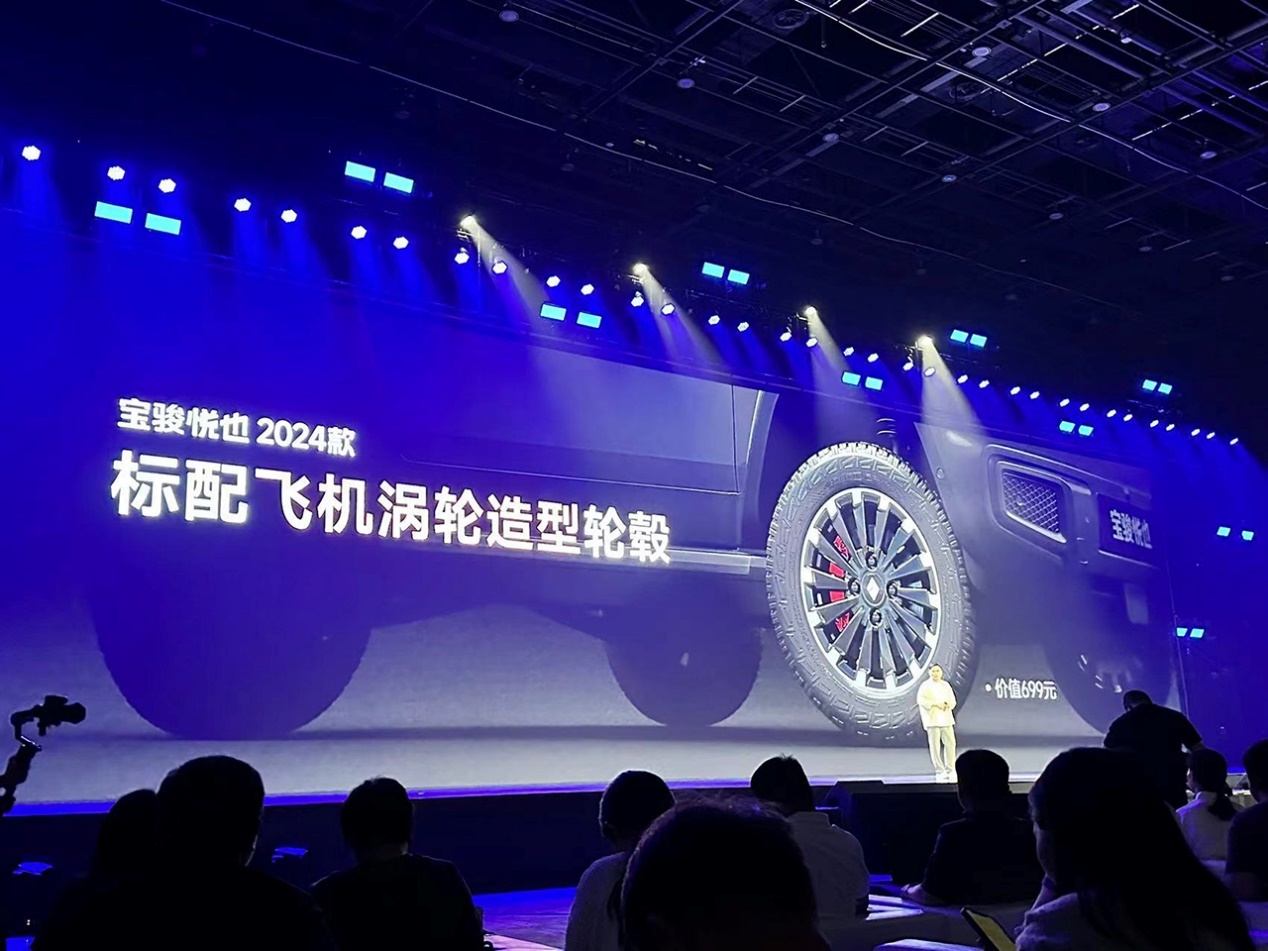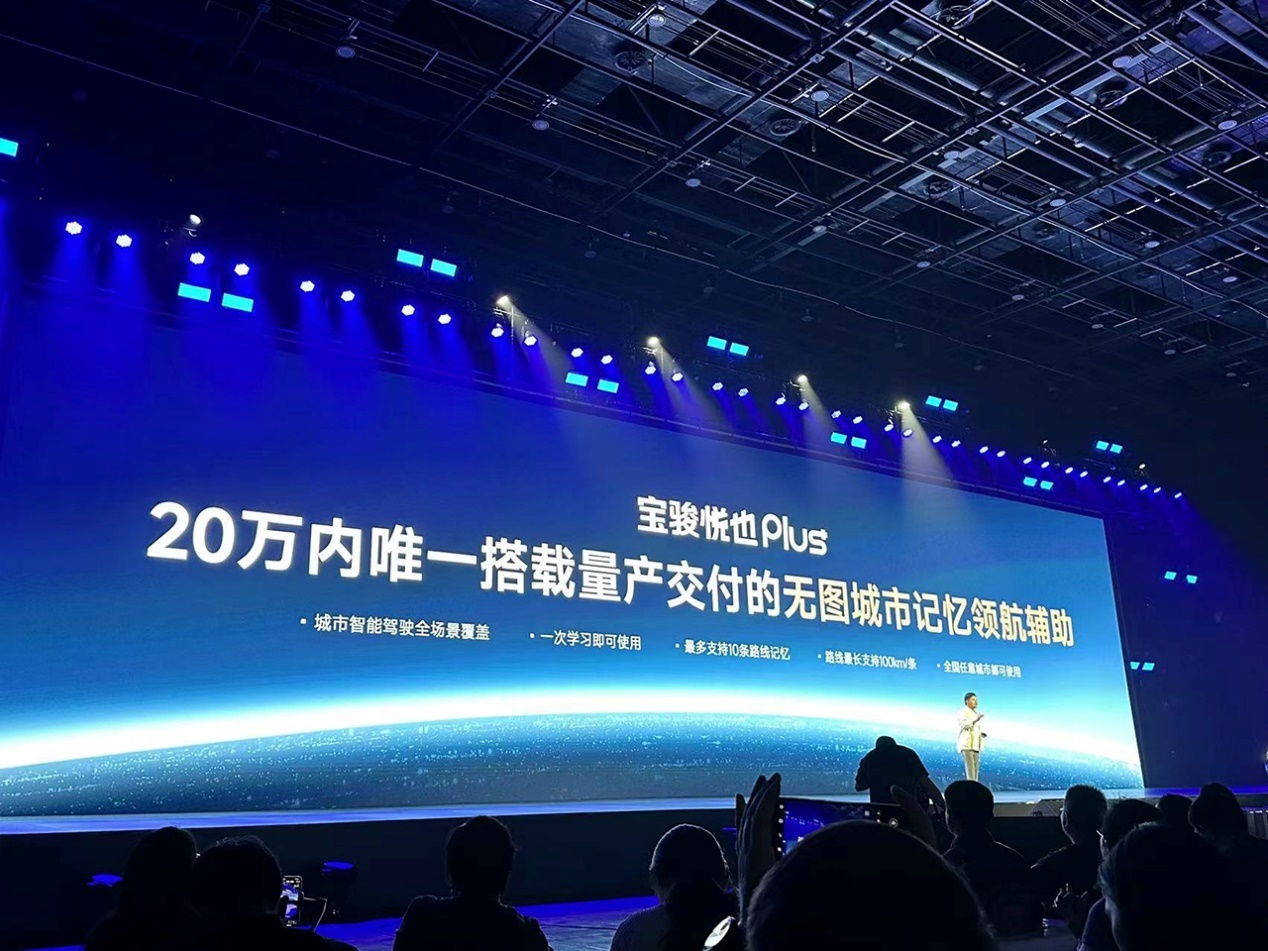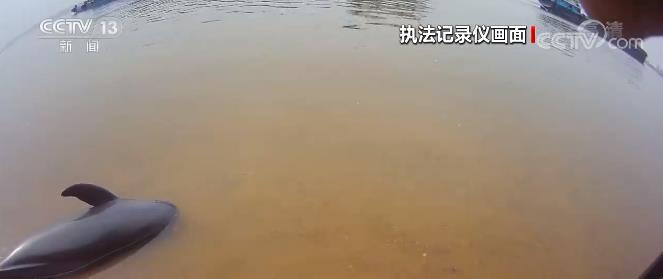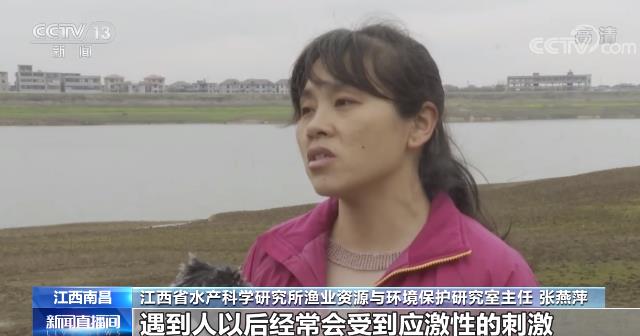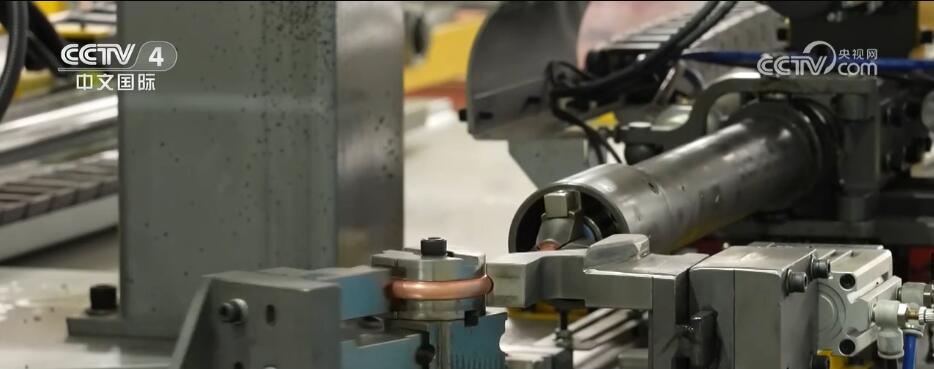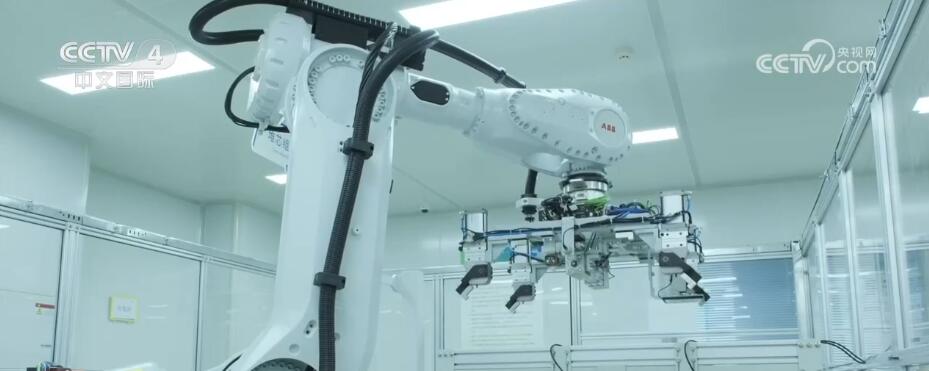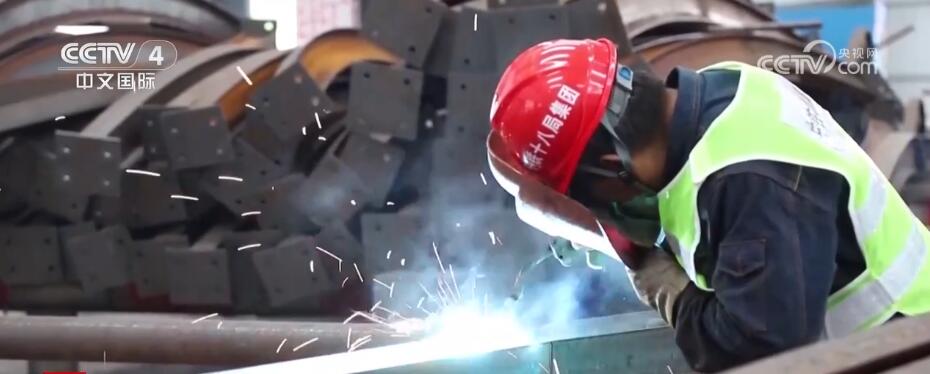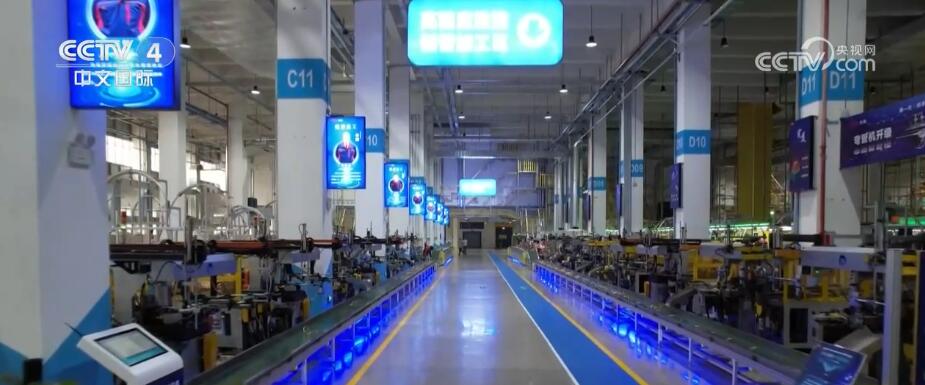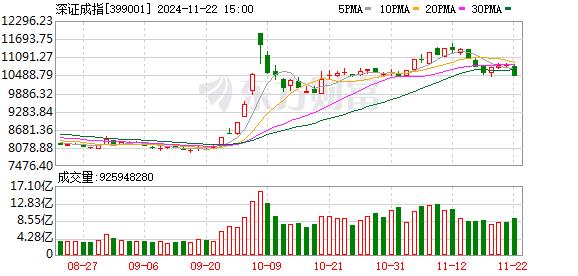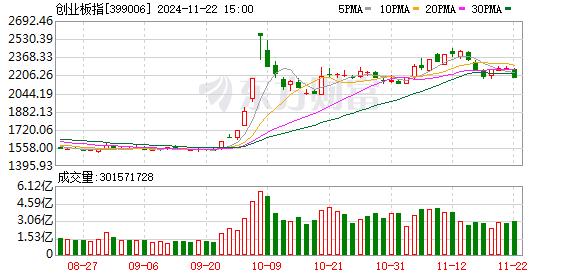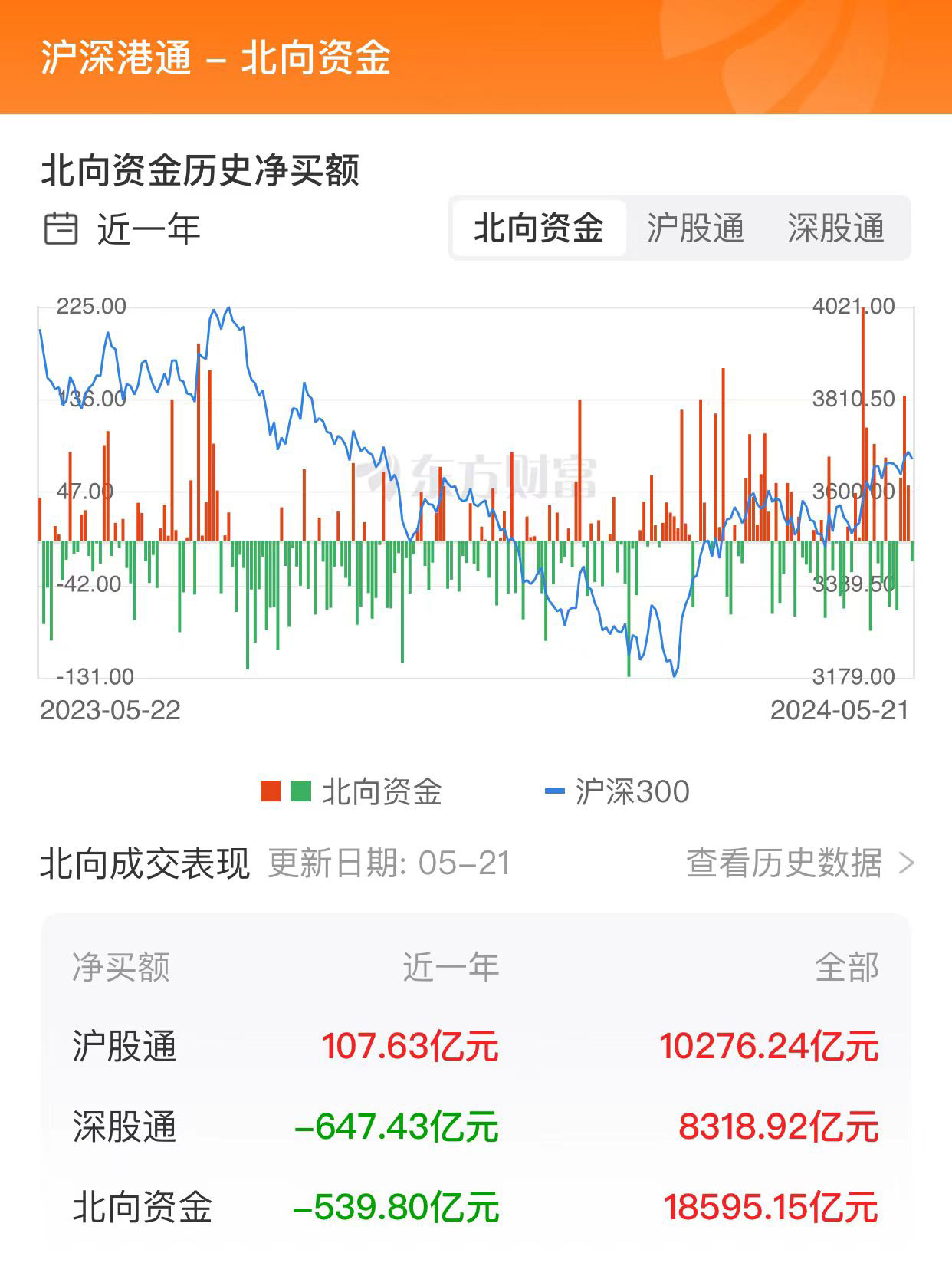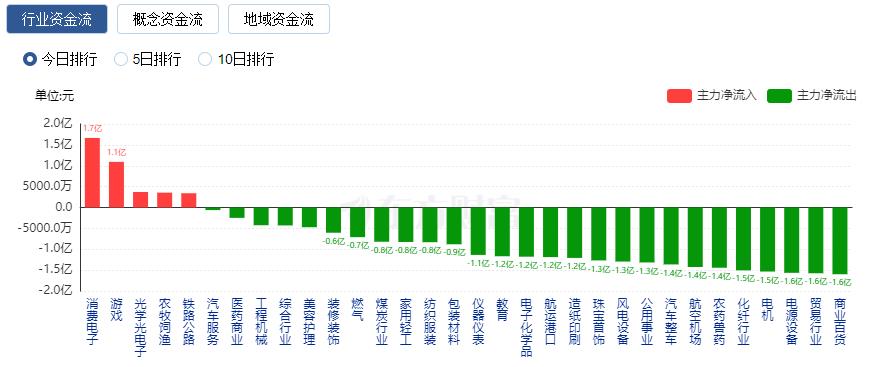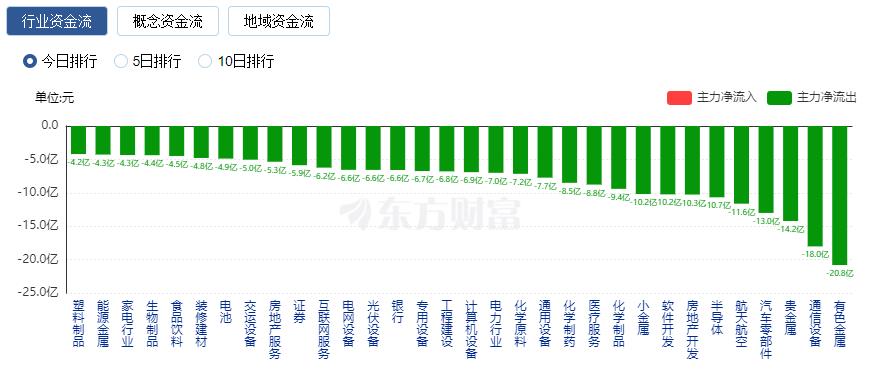Since its establishment in 2003, Guangzhou Auto Show has witnessed the vicissitudes of China’s automobile industry. With the liberalization of the domestic epidemic policy, everyone’s production and life will gradually return to the state before the epidemic. The 21st Guangzhou Auto Show in 2023 will be held in the Canton Fair Exhibition Hall from November 17th to 26th, in which the exhibition areas of auto parts and supplies, auto modification and new technologies will be extended from November 17th to 20th, 2023. This auto show is expected to have a total of 1,132 cars, including 59 first-time cars and 469 new energy vehicles in the world. As the final auto show in 2023, how can so many new cars not be overlooked? Don’t worry, Xiaobian has compiled a super-detailed exhibition guide for everyone, so that everyone can enjoy the Guangzhou Auto Show with confidence.


Exhibition date
The 21st Guangzhou Auto Show will be held in the Canton Fair Exhibition Hall from November 17, 2023 to November 26, 2023, including one media day, two professional public days and seven general public days, and the audience day will be open from 09: 00 to 17: 30 every day.

For detailed ticketing information and traffic information, this article is placed at the end of the article..

Pavilion information
The annual Guangzhou Auto Show has now reached its 21st year. This year, it will also be held in the China Import and Export Fair Exhibition Hall (hereinafter referred to as "Canton Fair Exhibition Hall"), from November 17th, 2023 (the 17th is Media Day) to November 26th, 2023. This year’s Guangzhou Auto Show will also be located on the second floor of Zone A, Zone C and Zone D of the Canton Fair, and the outdoor exhibition area of North and South Plaza will be used, with an exhibition scale of 220,000 square meters.


Zone a 1.1 hall
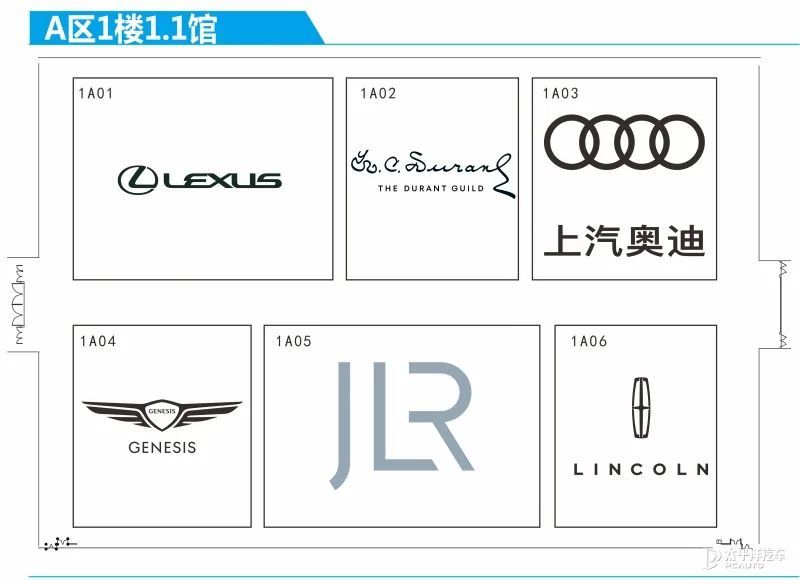

Toyota shiji (century SUV)

Toyota Century SUV, a highly anticipated model, will officially land in the domestic market at Guangzhou Auto Show, and it will be named "Shijie". As the Toyota version of Cullinan, Century SUV is not only the brand flagship, but also the leader in the luxury market. In Japan, a limited number of 30 sets are sold every month, and the starting price is as high as 25 million yen, which is about 1.24 million yuan, showing its dignity and rarity.

The vehicle design shows dignity and strength, the front is solid, the chrome-plated mesh is as tough as armor, and the center is inlaid with the century-old Phoenix logo, showing unparalleled dignity. Double-layer headlight design, four independent light groups are dazzling, just like the brightest stars in the night sky. The front enclosure is simplified, returning to the traditional shape, and the whole exudes a strong extravagance. The GR version is more sporty, and the embellishment of black components makes it more dynamic.

The color of the car body is rich and colorful, whether it is monochrome car paint or two-color car paint, or even flamboyant red, it can show the unique taste of the owner. The car body is huge, with the length, width and height of 5205/1990/1805mm and the wheelbase of 2950mm, and the thick D-pillar is exactly the same as Cullinan, showing a magnificent momentum.

Entering the car, the warm and comfortable design style makes people feel more cordial. Japanese simple color matching style, full LCD instrument and large-size central control display screen perfectly combine technology and luxury. Touch/physical buttons are readily available, with delicate leather coating and solid materials, all of which reflect the high-end quality of century SUV.

The rear door provides two ways to open the door: ordinary opening and sliding door. The seat is wide and thick, and the leg support is excellent. The second row of seats can realize the 77-degree adjustment of nearly lying flat, so that passengers can enjoy a comfortable journey. Each seat is equipped with an independent display screen and seat control screen, the central armrest is wide and comfortable, and the back row is also equipped with a dedicated small table board to provide passengers with all-round convenience and comfort. The window has a color-changing function, which provides private space for passengers. The trunk has a volume of 340L, meeting all kinds of travel needs. The new car also supports remote control function, which makes driving smarter and more convenient.

In terms of power, the Century SUV adopts a power system similar to the Lexus TX 550h+ plug-in hybrid model, equipped with a 3.5L V6 engine, with a comprehensive power of 412 HP (303 kW). The cruising range of pure electric vehicle is 69 kilometers, equipped with E-Four four-wheel drive system, and the comprehensive fuel consumption of WLTC is only 14.2L/100km. This outstanding dynamic performance not only highlights the powerful performance of century SUV, but also reflects Toyota’s technical strength in environmental protection and high efficiency.
Lexus GX
The new generation of Lexus GX will meet the domestic audience for the first time at the Guangzhou Auto Show, which has been officially launched in Austin, Texas, USA. As the third generation of GX cars, the new car and the new Land Cruiser are based on TNGA-F architecture, which will bring more outstanding off-road performance. The overall design of the new car has changed into a more tough and square style, and the interior and power have also been greatly upgraded. It is reported that the new car plan will be listed in overseas markets in early 2024, and will be introduced into the domestic market later.

The new generation GX has been repositioned as a "luxury hard-core off-road SUV", which has ushered in great changes in design. It is no longer highly similar to Toyota Prado, and its shape has injected a lot of tough and rough lines, which is quite tough for SUVs such as Toyota’s 4RUNNER in North America. Although the front face design is still a family-style spindle shape, it does not inject too many soft and delicate lines, but adopts blackening treatment, and the air inlet has a somewhat retro and square feeling. I believe it will be welcomed by hard-core SUV enthusiasts after listing.

The side of the car body follows the straight line, and it is almost impossible for you to find any large arc on the facade of GX. In terms of body size, the length, width and height of the new car are 4950/1980/1865mm and the wheelbase is 2850 mm. In approach angle, the pass-through angle and departure angle are 26/23/23 degrees, respectively, and the Overtrack version is 26/24/22 degrees. The taillights are designed through, and the rear windshield can be opened separately. At the same time, it is equipped with the trunk induction opening function, which is convenient for daily taking and carrying goods.

Lexus also launched the "Overtrail Project" program to provide users with more diversified outdoor lifestyles. Therefore, the new generation GX also launched the "Overttrail" version. This version of the car will have a series of exclusive design elements and functional configurations to cope with the more extreme driving environment.

The interior design of the new generation GX also fits the tough theme. Only the steering wheel design and the multi-function buttons on it can see the shadows of RX and NX in the same door. The towering center console is equipped with a 14-inch central control screen, which can support the interconnection of wireless Apple CarPlay and Android Auto phones. It is also equipped with a 12.3-inch LCD instrument, and it also supports the optional HUD head-up display function. In addition, we can also see the air conditioning knob with color LCD display that is common in Lexus new cars, and a large number of physical buttons are also reserved near the gear handle, which is convenient for users to operate quickly.

The new car can also provide a 6-seat or 7-seat layout, with ventilation and heating functions as standard in the front row and support for optional rear seat heating. The third row provides electric and manual seating configurations. Rear seat reminder has been implemented to improve safety and convenience.


In terms of power, the new generation GX offers a 3.5-liter V6 twin-turbo engine and a 2.4-liter inline four-cylinder turbocharged hybrid system. The 3.5-liter V6 version brings a maximum output of 354 horsepower and a peak torque of 649 N m. The transmission system is matched with the 8AT gearbox, and it is equipped with a full-time four-wheel drive system, a Tuosen central differential lock and an electronically controlled transfer case, and the traction can reach 8,000 pounds. The "Overtrail" model with stronger off-road performance also has the electronic dynamic suspension system E-KDSS pioneered by LEXUS, which improves the road driving quality while taking into account off-road strength, advanced braking control technology (including all-terrain selection system and crawling control system) and all-terrain monitoring system to help vehicles easily cope with various driving environments.
Defender V8 DEFENDER
Some time ago, Land Rover has announced the lineup of Guangzhou Auto Show, which will display the brand-new Defender V8 DEFENDER, the 2024 Range Rover and Range Rover Sport Edition, and the Discovery Family and Jaguar brand models.

The Land Rover DEFENDER series will launch the new V8 models of DEFENDER 90, 110 and 130, equipped with a 4.4T V8 engine, with red V8 and Defender logo on the exterior details.


The 2024 Range Rover and Range Rover Sport Edition will also be listed at the auto show. The new Range Rover will upgrade its configuration and power system, and the Range Rover Sport Edition will also be adjusted. The price will be announced at the auto show.

Zone a 1.2 hall


Brand-new domestic Prado
Since the domestic Toyota Prado stopped production and sales in 2020, it has become a regret in the hearts of many off-road enthusiasts. Until August this year, this regret was made up, because the new Toyota Prado was released, which not only changed its brand-new platform, brand-new design and brand-new power system, but also was introduced to China by FAW Toyota, and it is expected to be listed in June 2024.
Prior to this, the new Toyota Prado is expected to be officially unveiled at the Guangzhou Auto Show. At the 2023 Tokyo Auto Show, which opened last week, the new Prado ushered in its debut and became one of the most eye-catching models at the auto show.


According to the previous big coffee in the industry, the brand-new domestic Pula will provide three models of China Net according to different configurations, including the retro round lamp model (low matching), rectangular lamp model (middle matching) and a special version of the model, instead of using the "TOYOTA" letter LOGO, it will use the Toyota tauren logo (super matching exclusive).
And said that the domestic version of Prado will provide four colors to choose from, namely white, silver, black and bronze. As for the price, the big coffee guess is 400,000-600,000 yuan, while the price of the new Prado exposed online a few days ago is 450,000-550,000 yuan. For reference, the price of 2019 domestic Prado is 49.48-50.48 million yuan.

In addition, it is worth mentioning that the brand-new Prado, which was unveiled at the Tokyo Auto Show, is equipped with a brand-new Toyota half-width steering wheel with a steer-by-wire system, which can turn 60 degrees at most from left to right. At the same time, the steering wheel also integrates the throttle and brake control. The field personnel demonstrated a concept that the throttle and brake can be controlled only by the steering wheel, without the throttle brake pedal at all, and then the throttle is the handle pressed by the right thumb (like a scooter), and the brake is the brake handle behind the steering wheel like a bicycle.
In terms of body size, the length, width and height of the new Prado are 4925/1980/1870mm and the wheelbase is 2850mm;; In cross-country parameters, the ground clearance is 221mm, and the approach angle, departure angle and passing angle are 31 degrees, 22 degrees and 25 degrees respectively.

In terms of power, it is understood that the new Prado will be equipped with a hybrid system consisting of a 2.4T four-cylinder engine and an electric motor in the China market, in which the maximum power of the engine is 330 HP, and the comprehensive torque of the system is 630 Nm. In addition, the electric motor can provide additional power of 49 HP. In terms of transmission system, it is matched with an 8-speed automatic manual transmission, and equipped with off-road functions such as full-time four-wheel drive, transfer case and central differential lock.
Crown Sedan
In addition to the new Prado is expected to debut at the Guangzhou Auto Show, Toyota also has a heavy model debut-Crown brand-new sedan. At present, FAW Toyota has officially announced the preview of the car, and its appearance at the Guangzhou Auto Show is already certain. It is worth noting that at last week’s Tokyo Auto Show, the Crown Sedan model debuted, and the new car was positioned as a medium-sized sedan coupe, which is expected to be consistent with the model unveiled at the Guangzhou Auto Show.


From the appearance, the new car adopts a brand-new design language. The front face is equipped with a large vertical grille net and a penetrating LED daytime running light. The side face adopts a slip-back shape with multi-spoke blackened wheels, which is quite sporty. However, the new car does not adopt the popular hidden door handle design, and the rear of the car adopts the through taillight design, but the tailgate is not hatchback.
In terms of body size, Crown Sedan has a length, width and height of 5030/1890/1470mm and a wheelbase of 3000mm, which is much larger than that of Toyota Asian Dragon and lexus ES.

The picture shows the interior of Toyota Crown SportCross.
In terms of interior, the new car continues the layout design of Toyota Crown SportCross, equipped with dual 12.3-inch integrated large screen, three-spoke multi-function steering wheel and mechanical gear shifting. At the same time, more physical buttons are reserved in the car, which is a good balance between technology and practicality. At the same time, the interior materials use a lot of solid wood and leather to create a luxurious interior atmosphere.
In terms of power, the new car will have a hybrid version and a hydrogen fuel cell version, but the specific power parameters are still unclear. For reference, Crown SportCross offers 2.5L hybrid system and 2.4T hybrid system in the domestic market. Among them, the maximum power of 2.5L engine is 185 horsepower, the maximum power of motor is 120 horsepower, and the official acceleration time of 100 kilometers is 8.3 seconds. The transmission system matches the E-CVT continuously variable gearbox.
The maximum power of the 2.4T engine is 269 horsepower, the maximum power of the motor is 163 horsepower, and the official acceleration time of 100 kilometers is 5.8 seconds. The transmission system is matched with a 6-speed automatic manual transmission.
In terms of price, also for reference, the price range of Crown SportCross in the domestic market is 36.90-42.90 million yuan.
Mazda CX-50 line is also a mixed version.
As the Guangzhou Auto Show is about to kick off, our front team successfully photographed the hybrid version of Mazda CX-50 around the exhibition hall, which will be officially listed at the Guangzhou Auto Show from now on. Previously, the new car was mass-produced on November 3. The biggest highlight of the car is based on the newly developed hybrid platform of Changan Mazda, which is equipped with a hybrid system consisting of a 2.5L naturally aspirated engine and a motor.


Of course, we are also familiar with this hybrid system, that is, the one on Toyota, in which the engine comes from GAC Toyota, with a maximum power of 178 HP, and the motor power is unknown. For reference, the maximum power of the motor on the hybrid version of Toyota Willanda is 120 HP, the comprehensive power of the system is 218 HP, and the comprehensive fuel consumption of WLTC is 5.1L/100km.


As for the appearance, the new car continues the design of the fuel version as a whole, mainly by adding a mixed logo at the front fender to enhance the recognition. In terms of body size, its length, width and height are 4785mm/1920mm/1670mm, and its wheelbase is 2815 mm. Except for the height increase of 32mm, the other data are the same as those of the fuel version.

In terms of price, the price range of the current fuel version model is 15.98-206,800 yuan, which is 14,000 yuan lower than the threshold of Toyota Velanda at the same level, while the starting price of the hybrid version model of Velanda is 223,800 yuan. If the pricing strategy of the fuel version model is followed, then the price of Mazda CX-50 line also starts from 210,000 yuan.

Zone a 2.1 hall



Volvo EM90
On November 12, Volvo’s first pure electric MPV model was officially launched, and a new car was launched, with an official guide price of 818,000 yuan, and the new car was positioned as a medium and large MPV.

Volvo EM90 is the first pure electric MPV model under the Volvo brand, which adopts Scandinavian design style in design, showing low-key luxury and restrained atmosphere.

In terms of design, Volvo still continues the family-style design language, and the headlights of Raytheon’s hammer on the front face are still preserved. And it incorporates more scientific and technological elements. For example, when it is lit, the headlights light up slowly. In addition, there is also a ceremonial "boot animation" on the Logo of the front air intake grille. The appearance can be selected from four colors: gilded gold sand, sea gray, crystal white and agate black, which can meet the individual needs of different consumer groups.

The vehicle size is 5206/2024/1859mm, and the wheelbase is 3205 mm. It is positioned as a medium and large MPV. The side design is quite atmospheric, and the layering is very rich, which will not make you feel that the design is too monotonous, and will not lose the sense of volume that a medium and large MPV should have.

The tail design continues the classic design elements of Volvo brand, but the line-type light group has been changed to the point-breaking light group, but the taillight style of Raytheon Hammer is still retained.

In terms of interior, Scandinavian design is mainly about simplicity, function and nature. First of all, simplicity, in fact, the real car design of EM90 highly restores the design of previous concept models, including the layout of the screen and the layout of the overall interior functional area and even the direction of lines.


As for nature, it is reflected in the materials used in the interior. The wood used in the door panels and the center console comes from extremely cold areas. Although the number grows slowly, the wood density is high, the texture is not easy to deform, and it is in the door.
The board is also decorated with luminous wood, and the unique "VOLVO Morse Code" eggs are integrated into the wood grain. Another point is on the handle. EM90 adopts Orrisch crystal handle, which is not only a special crystal brand for Swedish royal family and Nobel Prize-winning dinner, but also has excellent workmanship and hand feel.
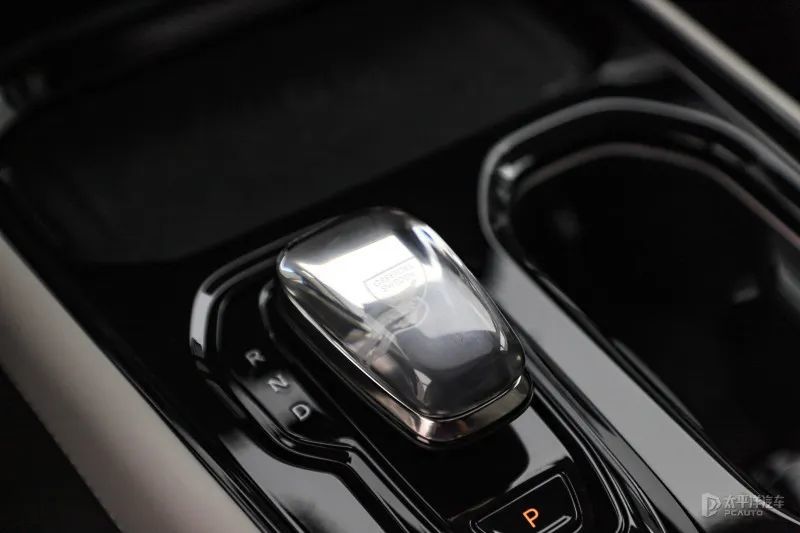
In the second row, there are two high-standard aviation seats, which not only support ventilation, heating and massage, but also support leg rest adjustment. In addition, you can also control the entire window in the second row and control the air conditioning temperature through the touch screen on the door panel.

An entertainment screen is also placed on the roof of the car in the back row, which needs to be controlled by the remote control, but the functions are still very rich. In addition to meeting the daily entertainment needs, it can also adjust every function of the air conditioner and complete the switching of various modes.

In terms of power, the new car adopts a single motor with a maximum power of 200 kW and is equipped with a 116-degree battery. In terms of battery life, the official CLTC cruising range has reached 738 km. In addition, the new car also provides a two-way charging function, which can be transformed into a convenient "mobile power station" at any time, and can charge other electric vehicles (up to 6.6kW) and electrical appliances (up to 3.3kW).
Cadillac OPTIQ
Cadillac OPTIQ positioning pure electric SUV, will also officially meet with you at the Guangzhou Auto Show. The new car has adopted a brand-new design. As Cadillac’s second Otneng model for the China market, OPTIQ is expected to be unveiled this year.

In terms of appearance, Cadillac OPTIQ adopts a brand-new design language. The headlight group presents a 7-shape, and the upper chrome-plated decorative strip connects the left and right headlights. Although it is an electric car, the new car still retains the net decoration.
In terms of body size, the length, width and height of the new car are 4822/1912/1642mm(1644mm) and the wheelbase is 2954 mm. Although it is smaller than LYRIQ Sharp Song, it is expected that the price will be cheaper.

There are two vertical taillights at the rear of the vehicle, and the segmented design is adopted, showing a unique personality. The whole body has a wider visual experience.

In terms of power, the motor power of the new car is 150 kW and 180 kW respectively, and the maximum speed is 180 km/h. We will continue to pay attention to more information about this model.
Dazhong ID.3
The mid-term redesigned ID.3 will also meet the audience in China at this Guangzhou Auto Show, and the official map of the new car has already been released. The new car maintains its original overall style, and has been upgraded for its internal and external design, which will improve its performance in all aspects, such as battery life and car engine, and at the same time enhance the cruising range of its various models. The new car is expected to be delivered to European buyers in the fourth quarter of 2023 at the earliest, and the domestic version will also be updated.

In fact, the overall visual change of the new ID.3 is not too big. The appearance is mainly improved by the newly designed dot-matrix light source inside the headlight. The front of the car follows the previous through-light strip configuration, and the bumper shape is more concise. The lattice pattern of C-pillar is cancelled in the new model, and the taillights are added with a brand-new matrix light group, which also contains a changeable X-light shape to increase its charm, while retaining the low wind resistance wheel group.


The interior follows the layout of the old models, but it adds a little freshness to the materials, color matching and metal trims. Originally, some hard plastics were paved with pure leather (non-animal materials). In addition, Volkswagen also said that the equipment level of the new car will be significantly improved. In addition to having a better charging experience, it also comes standard with a 5.3-inch floating instrument and a 12-inch central control panel, and the car has also been updated.

In addition, more practical designs will be introduced into the car. For example, the position under the central control has been redesigned to accommodate two groups of cup holders, and the common detachable floor will be added to the trunk, greatly improving the convenience of daily use. The driver’s assistance system is also fully functional, and the Travel Assist with Swarm Data and memory automatic parking function are optional.

It is worth noting that Volkswagen also provides more handsome integrated seats for the new ID.3, which are also made of environmentally friendly materials, and there are also panoramic skylights that can increase the visibility of the car room.

The power of the new ID.3 has not changed. The maximum power of the motor is 201 HP (150 kW), the maximum torque is 310 Nm, and the battery capacity is 58kWh and 77kWh. It is slightly different from the current domestic ID.3 (the domestic version is 125 kW motor +52.8/57.3kwh battery pack), and the cruising range is 426km and 546km for 30 minutes. The new ID.3 comes standard with the Plug & Charge convenient charging system. When it is connected to the charging pile, the vehicle will be automatically authenticated and start charging. At the same time, the system can also monitor the occupied charging stations and exclude them from the suggested stations.

The new car will also be equipped with a new generation of driver assistance systems, including full-speed adaptive cruise system (ACC) and lane keeping system. You can also choose the Travel Assist full-speed driving assistance system that supports group data. When the group data is available, the Travel Assist full-speed driving assistance system can keep the vehicle in the right lane only by one recognizable lane line, even if the vehicle is driving on a country road.
It is worth mentioning that Volkswagen is also expected to launch a GTX high-performance version of dual-motor four-wheel drive for ID.3, and the maximum horsepower is expected to exceed 272hp, and it will be more fierce and sporty for the exterior kit and interior design.
Volkswagen ID.BUZZ
Volkswagen ID.BUZZ will once again meet a domestic audience. Although it is not the first time to appear, it will be introduced into China as a legendary model, and it is worth sharing with you again. According to the plan, the new car will provide a 5-seat version in the early stage and a 6-seat version in the later stage. For reference, at present, Volkswagen ID.BUZZ has been listed in the European market, and the price of ID.Buzz Cargo is 54,430.6 euros, which is about 385,000 yuan. The price of ID.Buzz Pro is 64,581.3 euros, about 456,000 yuan. The new car will be officially introduced by SAIC Volkswagen, and countless fans are excited about it.

The appearance of the new car continues the design elements of Volkswagen T-series models. The large-size logo and two-color body design are all in tribute to the classic shape of Volkswagen. In the front part, the new car is still the same as the ID series models, with penetrating light strips and matrix headlights, plus a large number of hollowing-out treatments around the front, which has a strong sense of design.


On the side of the car body, the huge triangular window on the A-pillar of the new car is more conspicuous, and the size of the side window is gradually reduced from the front row to the back, so the overall shape is more unique. In terms of body size, the length, width and height of the new car are 4712mm/1985mm/1937mm respectively, and the wheelbase is 2988mm.

The shape of the rear part also sees the shadow of the ID. Family, and the through-going light belt with the square tail shape can satisfy the passenger space in the car as much as possible. There is also a huge Volkswagen LOGO at the tail, and there is also the logo of ID. Buzz, which is highly recognizable.

Walking into the car, the new car is still in the interior style of Volkswagen ID. The suspended LCD instrument is matched with the 12-inch central control panel, and the through air conditioning outlet, plus the decoration of wood grain panel, the overall exquisiteness is greatly improved, and it also adopts two-color color matching. It is reported that the vehicle will be equipped with up to 8 USB interfaces to meet the charging and use needs of passengers for mobile devices. Among them, three USB-C interfaces are standard configuration, two have data transmission function, and the third one is located on the passenger door. Through optional installation, there will be three additional interfaces on the center rearview mirror and the sliding doors on the left and right sides.

A foldable small table is also provided on the backrest of the front seat of the new car, and two charging interfaces will be provided in the third seat/trunk position. Depending on the equipment, the maximum charging power is 45 watts, which is three times that of the previous configuration. In addition, in addition to the electric sliding doors on both sides, the tailgate is also electric. Because there are only two rows of seats in the five-seat model, there is a huge storage space in the back row. The capacity of the luggage compartment of MPV model is 1121 liters, which can be expanded to 2205 liters in the case of the second discharge.


In terms of power, the new car is equipped with a power battery pack of 77kWh (with a total capacity of 82kWh). The maximum power of the motor is 150kW, the peak torque is 310N·m, and the maximum speed is 145 km/h. The DC fast charging power can reach 170 kW, and it takes about 30 minutes to charge 5%-80%, and the cruising range of WLTP is 423km. At the same time, the vehicle is equipped with advanced software system, driver assistance system and two-way charging function. For more information about the new car, we will continue to pay attention to the report.

Zone a 2.2 hall


GAC Toyota Camry
On November 14th, the brand-new ninth-generation Camry made its official debut in North America. It is worth mentioning that at this Guangzhou Auto Show, the new car will also be unveiled at the Guangzhou Automobile Toyota booth. The pace of domestic replacement and overseas replacement is so close that the ninth-generation Camry has become a highlight of the Guangzhou Auto Show. Before that, we can take a look at the North American models.
Judging from the press conference, it is obvious that the ninth-generation Camry still adopts double appearance design to further distinguish the preferences of different consumers. The overall line outline of the appearance has not changed much, especially from the front side, the shape of the waistline and the smooth outline of the car body all show the feeling of the eight generations of Camry. The two-color body design has also been retained, and the new car will also provide 19-inch wheels to make the whole body more dynamic. The specific size of the car body is still unknown, but it is estimated that there will be no obvious change.

The change of design concept is mainly reflected in the front face and tail. In the front face, the vertical sign changed into a horizontal sign, and the front edge of the engine compartment retreated, creating a visual effect that the front part of the car sank, and there was a feeling of being ready to go. In addition, the light group is changed to C-shaped headlights, the grille shape of the front bumper is similar to the honeycomb style design, and more moving edge details are added on both sides of the bumper. The design of the tail is more concise, and it is also a C-shaped taillight, which echoes the headlights.



The new car is built on the TNGA-K platform, and the overall temperament is still familiar. In addition, the new car should launch four models, namely LE/SE/XLE/XSE.
Judging from the interior of the models released in North America, it still has a strong sense of machinery, especially the lines at the air outlet of the instrument panel, which makes the interior more tough and unconventional.

It is understood that the middle and high-end models of the new car will be equipped with a 12.3-inch central control large screen, supporting wireless CarPlay and Android Auto, as well as wireless charging function. The head-up display and JBL sound system will not be absent. In terms of safety configuration, the new car comes standard with TSS3.0 Zhixing safety suit.

In terms of power, the ninth-generation Camry unveiled in North America has achieved a comprehensive hybrid, and there will be no more fuel models, mainly featuring a 2.5L hybrid version and providing a two-drive/four-drive version. The four-wheel drive model adds a driving motor to the two-wheel drive model, with a maximum power of 173kW, while the two-wheel drive model has a maximum power of 168kW.
Honda e:NP2
At this Guangzhou Auto Show, the production version of Honda e:NP2 will meet the audience soon. Previously, at the 2023 Shanghai Auto Show, Honda China officially released the second model of its e:N brand, the e:NP2 Prototype concept car, which was developed by Honda’s China team, and came from the intelligent and efficient pure electric architecture "e:N Architecture F" exclusive to pure electric vehicles. It is still a positioning SUV model.


The exterior design was developed by Honda’s China headquarters team. This exterior is described in Honda’s own words: adopting the forward-looking design concept of e:N Design, and adding sharp modeling and sharp moving lines that break through the boundaries between reality and the future. The side of the car body adopts a slip-back design with a large inclination angle, which reflects a more dynamic modeling style and also reflects that the positioning of this car will also be biased towards your young and sporty orientation.

In terms of the tail, this car also adopts a very sci-fi design style. The through taillights are "unfolded" on the left and right sides to form a C-shaped style. With the raised rear wheel eyebrows, it enhances the sense of science and technology and also enhances the muscle of the vehicle.

At the press conference, Honda China announced that it has fully entered the era of electrification. After 2027, all models launched by Honda in China are hybrid vehicles and pure electric vehicles, and no new pure fuel vehicles will be launched; By 2035, Honda China will achieve 100% sales of pure electric vehicles.
At the same time, the concept car "e:N SUV Preface" of Honda’s E: N brand third bullet electric vehicle, which Honda China plans to launch in 2024, is the world premiere. In addition, the product matrix of Honda e:N brand will be further enriched and expanded. This auto show also brought the fourth bomb model e:N GT Concept, and the research and development of the production car built on this basis is also progressing smoothly. Like the third bomb, the fourth bomb model will also adopt the brand-new exclusive architecture "e:N Architecture W" for pure electric vehicles, and it is planned to be launched after 2025.
Chuanqi E8
We learned from official sources that GAC Chuanqi will announce the pre-sale price and start the pre-sale at the Guangzhou Auto Show, which will open on November 17, and tentatively start delivery to users in early December. GAC Chuanqi E8 has a length of 4.9 meters and its own plug-in hybrid, which is very attractive to users with convenient charging conditions.

In terms of appearance, Chuanqi E8 shows an avant-garde and fashionable atmosphere under the blessing of the design style of the front face of the "Guardian City". For example, the interior of the trapezoidal mesh is spread out in a staggered arrangement in the form of stepped decorative strips, and at the same time, silver chrome-plated decorative strips are given as a bedding. In addition, the split headlight is composed of an upper penetrating lamp group and a lower fangs headlight, and the Logo can be lit together.

The length, width and height of the new car are 4920/1900/1760mm and the wheelbase is 2930mm respectively. The modest size can meet the parking space of most home users. The body design of van MPV is adopted as a whole, and the design of 270 three-side connected windows can enhance passengers’ sense of vision. In addition, the blade-type multi-spoke hub has a good visual impact.

The tail design is simple, and the penetrating LED is the visual center of the whole car, extending from the D-pillar to the middle Logo of the tail. At the same time, like the front of the car, this part of the area can shine together.

In the interior, the vehicle uses a lot of straight center console lines and embedded narrow strip LCD instrument+large-size floating central control panel, which adds a little more sense of technology. It adopts black+brown double-color design, and chrome-plated elements are added in many places for embellishment, which is combined with leather materials covered in many places to enhance the advanced feeling of the vehicle.

Chuanqi E8 is equipped with the electronic and electrical architecture of Guangzhou Automobile Spirit, which was first applied by Chuanqi and upgraded in all directions. Compared with traditional vehicles, the computing power is increased by 50 times and the data transmission speed is increased by 10 times. In terms of intelligent cockpit, Chuanqi E8 is equipped with Qualcomm Snapdragon 8155 chip, 14.6-inch central control large screen and 8-inch instrument, and the latest ADiGO 5.0 is built in.

The car adopts 2+2+3 seat layout, in which the second row of executive seats has the functions of electric leg rest, heating and ventilation. The most important thing is to support the "one-button zero-gravity mode", which can make the second row of passengers get the most comfortable ride experience.

For an MPV of the size of Chuanqi E8, the performance of its interior space is not bad, and it claims to be an MPV model with a usable plane area of 5.20 square meters. In addition, through some settings of the seats in the car, several playing modes can be created. And the third row of seats can be completely stored under the negative floor, forming an oversized storage space.

Chuanqi E8 uses its own plug-in hybrid, which is composed of 2.0L engine and drive motor. The maximum power and torque of the 2.0L engine are 103kW and 180N·m respectively. The driving motor has a maximum power of 134kW and a maximum torque of 300N·m, which is matched with a two-speed DHT transmission. The official claim is that the acceleration time of 100 kilometers is 8.8s s. It has three driving modes: economy, comfort and sports. Equipped with a ternary lithium battery with a capacity of 25.57kWh, CLTC has a pure electric cruising range of 150km, a power consumption of 18kWh/100km per 100 km, a comprehensive cruising range of 1200km with full oil and electricity, and a comprehensive fuel consumption of 1.13L/100km. In addition, the energy mode will be consistent with Chuanqi E9, with pure electricity, intelligent hybrid and power conservation as priorities, and the energy recovery intensity can be adjusted.

Zone a 3.1 hall
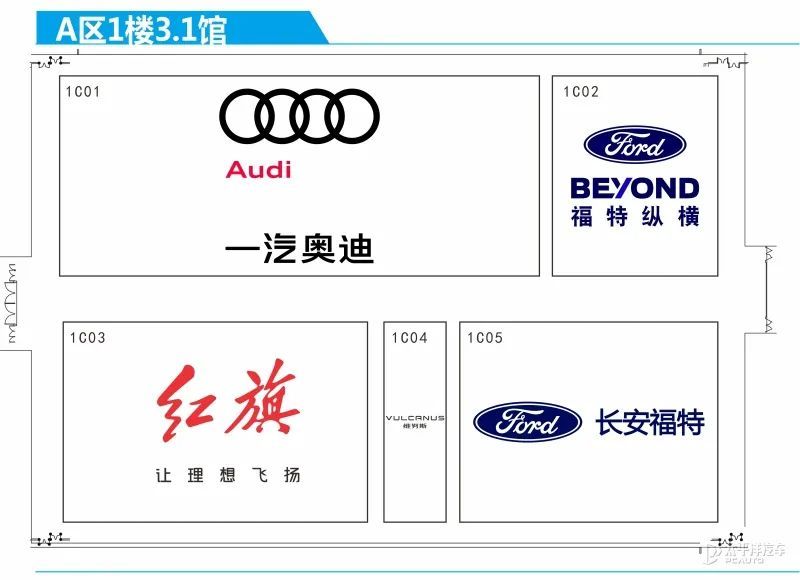

Domestic Ford Ranger
At the upcoming Guangzhou Auto Show, Jiangling Ford Ranger will be officially listed. The new car was officially put into pre-sale at the Chengdu Auto Show in 2023, with a pre-sale price of 269,800 yuan and a limited number of 800 cars, and the starting price of the whole car system will not exceed 160,000 yuan. In addition, the first model Ford Ranger 1st Edition will also bring a very rich original factory off-road modification and exclusive design style.


In terms of appearance, Ford Ranger’s design is quite fashionable and domineering, the grille area is very large, and there are transverse spokes with penetrating design inside the grille. This design is also similar to the F-150 Limited version, and the C-shaped headlights on both sides have become the finishing touch of the whole front face design.

In addition, the first edition model of Ford Ranger 1st Edition was originally equipped with front and rear steel bumpers and chassis armor. At the same time, in order to improve the wading depth, the new car adopted a unique design with the wading throat air inlet backward.

In the interior design, Ford Ranger also continues the most advanced design style of Ford, and has a good performance in terms of materials and materials. In addition, it also has some small ideas. For example, in addition to the traditional glove box, the center console also provides a storage box at the upper part, and there is also a retractable cup holder.

The central control center is a 12.8-inch vertical central control screen, equipped with the latest SYNC 4 infotainment system, which not only supports common mobile phone screen projection functions, but also has many localized apps and can realize voice control. In addition, in terms of off-road configuration, the new car also has tank U-turn, steep slope descent, front axle differential lock, rear axle differential lock and so on.

In terms of power, the new car will provide a 2.3T turbocharged gasoline engine and a 2.3T turbocharged diesel engine, which is matched with an 8AT gearbox.
Hongqi EH7
Hongqi EH7, namely Hongqi E001, which debuted at Shanghai Auto Show, is the first new energy car with Hongqi FMSs platform architecture. The car is nearly 5 meters long and adopts a hybrid form of pure electric and plug-in. It is expected to be officially listed at the Guangzhou Auto Show.


The appearance is simple and atmospheric, and the front of the car is designed without the net, and the mixed version is inserted or retained. The front headlights are 7-shaped, full of light language function, the lower grille is smiling, and the central axis highlights the brand characteristics. The body size is 4980/1915/1490mm, and the wheelbase is 3000 mm. It pursues maximum seating space, short front and rear suspension, long wheelbase, and large inclination angle of the tail window, with coupe style. The A-pillar is equipped with a face recognition camera, the tail light is dazzling, the internal structure is complex, and the lighting effect is good at night.


The interior is equipped with 6+15.5-inch curved dual screen, AR HUD head-up display system and Snapdragon 8155 chip, which highlights the bold attempt of science and technology. The steering wheel is personalized, like a gamepad. There is a large air conditioning outlet at the bottom of the screen. Seat integrated design, strong comfort, bold color matching and grid-like perforation. There is plenty of legroom in the back row, the armrest is wide, and the electronic button opens the door handle to improve the ride comfort.
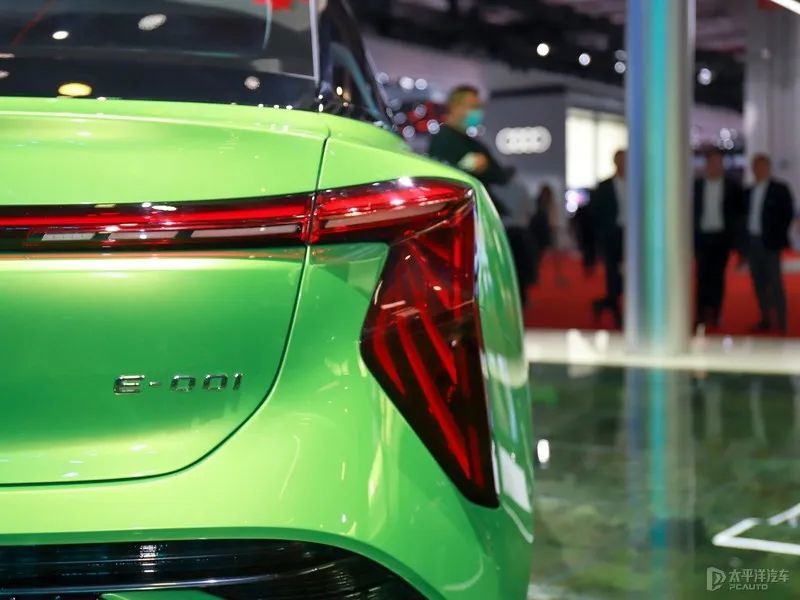
In terms of power, the motor has a maximum power of 202 kW /253 kW and is equipped with a ternary lithium battery. The battery-changing version and the long battery life fast charging version are available, with battery life of 600km and 800km respectively. Front and rear double motors, total power 455kW, peak torque 756N·m, 0-100km/h acceleration only 3.9 seconds, equipped with HAP precise automatic driving assistance system.

Zone a 3.2 hall


Chery Fengyun A8
As the Guangzhou Auto Show is about to kick off, our front team successfully photographed Chery Fengyun A8 around the exhibition hall. This new car will be officially unveiled at this year’s Guangzhou Auto Show to meet the fans. Previously, the official map of the new car has been released, which is the Arrizo 8 PHEV model that was unveiled at the Shanghai Auto Show. Now it has been renamed Fengyun A8 after being included in Chery’s brand-new new energy product sequence. According to reliable sources, the new car is expected to be officially listed at the end of this year.



In terms of design, Fengyun A8 is highly consistent with the fuel version of Arrizo 8, showing a strong visual impact. The large mouth grille with dot matrix design on the front face, with the latest flat LOGO of Chery New Energy, shows its new energy identity. In terms of body size, the length, width and height of the new car are 4780/1843/1469mm and the wheelbase is as long as 2790mm, which makes it occupy obvious advantages in the compact automobile market.

Entering the car, the interior also continues the design concept of the fuel version, creating a simple and scientific visual effect. The dual 12.3-inch instrument panel shows a sense of science and technology, and supports the wireless phone mapping function (wireless CarPlay+ Huawei Hicar), so that drivers can keep connected with the world at any time. In terms of configuration, the new car is extremely luxurious, equipped with an openable panoramic sunroof, ventilation and heating functions of the main driver’s seat, etc., providing drivers and passengers with a comfortable and convenient driving experience.

In terms of power, Fengyun A8 will take the first plug-in hybrid system consisting of the fifth-generation ACTECO 1.5TGDI high-efficiency hybrid engine and motor. The maximum power of the engine is 115kW and the maximum torque is 220 Nm. The maximum power of the motor is 150kW and the maximum torque is 310 Nm. The transmission system is matched with DHT150 hybrid gearbox to ensure that the acceleration from 0 to 50 km/h takes only 3 seconds, and the acceleration from 0 to 100 km/h reaches 7 seconds. In addition, the pure battery life of the new car exceeds 100km, and the comprehensive battery life is as high as 1300km, fully demonstrating its high efficiency and environmental protection advantages.
Xingjiyuan ES
At this Guangzhou Auto Show, Star Age ES will officially open for pre-sale. On October 16th, 2023, during Chery Technology DAY, Star Road’s high-end new energy series, Star Era ES, has officially started blind booking. The blind booking price range of new cars is 260,000-360,000 yuan, and a triple gift of blind booking has been introduced. From now on, users can enjoy the car booking rights of "Lifelong Guarding Gift for the Whole Vehicle and Three Power Plants, 6666 yuan Expansion Gift and 5000 points Gift" when ordering 66 yuan.
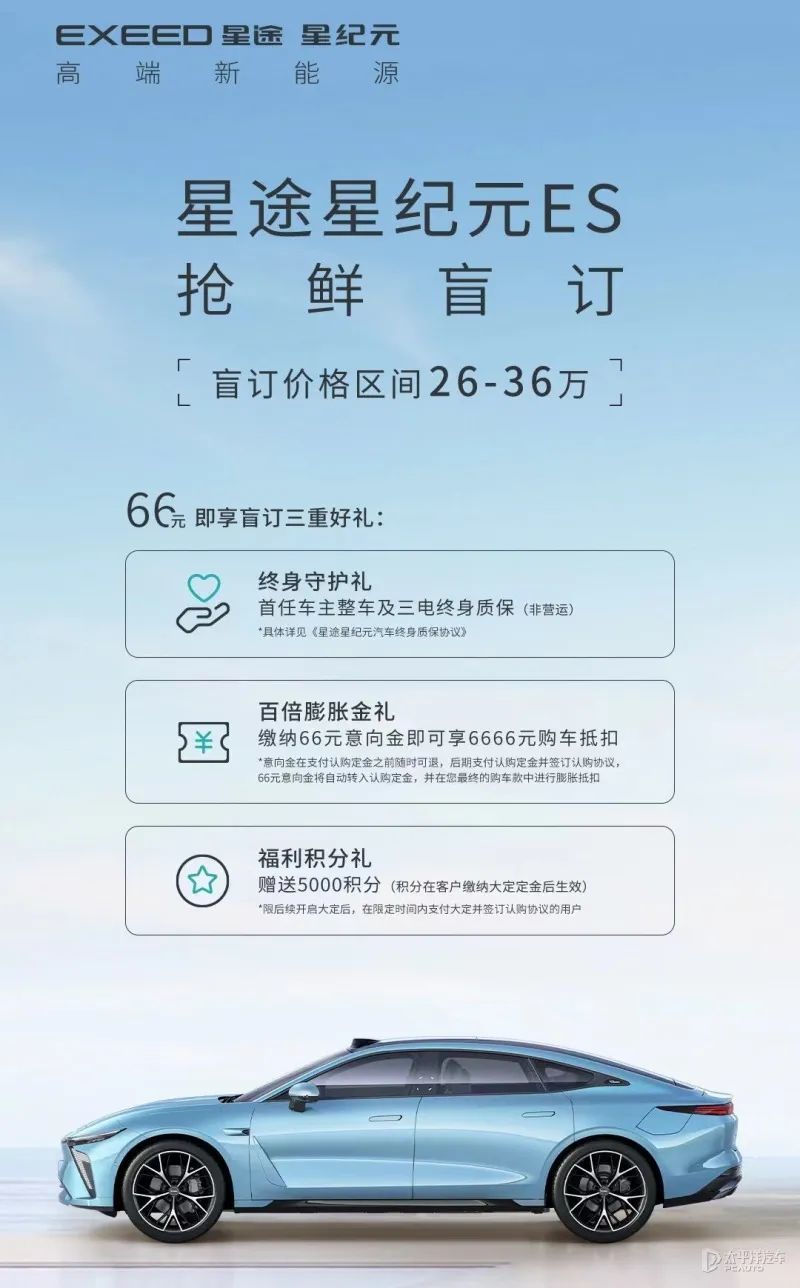
It is worth mentioning that the Star Age ES first debuted at the 2023 Shanghai Auto Show, positioning medium and large pure electric cars, and completed its overseas debut at the Geneva International Auto Show some time ago, attracting the attention and discussion of many overseas consumers. At present, Star Road Star Era ES has completed the declaration, and the new car will be listed this year.

In terms of appearance, Star Road Star Era ES has adopted a brand-new design style, with a simple and elegant front face, a penetrating LED strip, a wing-shaped light group below and different decorative styles.

On the side of the car body, it adopts slip-back shape and is equipped with hidden door handles. According to different models, 19-inch, 20-inch and 21-inch wheels are available. In terms of body size, the length, width and height of the new car are 4945mm/1978/1489(1480 mm and 1467mm) respectively, and the wheelbase is 3000mm, which is similar to the Krypton 001 as a whole.

The tail shape is also very simple, using a flat through-type rear taillight group, and the lower rear enclosure is also decorated with black decorative panels, which enhances the sense of movement.

In the interior part, according to the appearance of the previous Shanghai Auto Show, the ES interior of Xingtu Xingyu Era adopts an embracing design style, equipped with a large-scale suspended central control screen, an all-LCD instrument panel and a dual-spoke multi-function steering wheel, and adopts a gear shifting mode. At the same time, the electric seat adjustment of the new car is designed at the door panel position, and two mobile phone wireless charging boards are also designed under the central control screen.

In terms of power, according to the application information, Star Road Star Era ES offers single-motor version and double-motor version, in which the single-motor version is divided into high and low power adjustment, and the maximum power is 185 kW (252 HP) and 230 kW (313 HP) respectively. The comprehensive power of the dual-motor version system is 353 kW (480 HP), and the acceleration time of 100 km will reach 3 seconds.
In terms of battery life, combined with the previous information, the new car is built on the new electric platform E0X of Chery Group, which supports 800-volt voltage system. At the same time, it will also adopt the battery pack of Chery NP2.0 technology, with a maximum cruising range of over 700 kilometers. At the same time, in the fast charging mode, it can achieve a cruising range of 150km in 5 minutes, and the battery can be charged from 30% to 80% in 15 minutes. In addition, the new car will be equipped with air suspension and CDC continuous damping control system.

Zone a hall 4.1
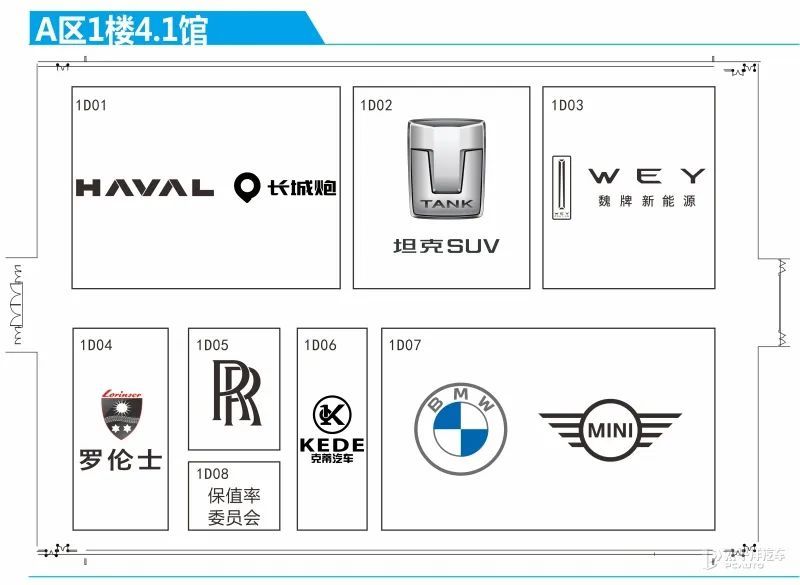

Tank 300Hi4-T
Some time ago, Great Wall executives said on social media that the tank 300Hi4-T is expected to be unveiled at the Guangzhou Auto Show. The new car is equipped with a plug-in hybrid system consisting of a 2.0T turbocharged engine and a motor, and the power is expected to be even better. Together with the previously launched fuel and HEV, the tank 300 will have three kinds of power.


In terms of appearance, the appearance of the new car is basically the same as that of the fuel version. The circular headlights are designed, and there are three horizontally arranged LED light groups in the interior, in which the circular outline of the middle light group extends all the way to the side of the car body. According to the declaration map, the new car can choose different styles of front face and rim, as well as wading throat, rim, towing hook hole, electric connector, luggage rack, exterior rearview mirror, electric side pedal, back door handle, side door handle, etc.

The new car still uses an external spare tire, with a square and tough body design and protruding black wheel eyebrows. The shape is wild and the tailgate is designed to open horizontally to the right. In terms of body size, the length, width and height of the new car are 4760/1930/1903mm and the wheelbase is 2750mm respectively.
In terms of power, the new car is equipped with a 2.0T engine with a maximum power of 185kW, and the battery uses a ternary lithium battery provided by honeycomb energy. After the introduction of PHEV plug-in hybrid model, plus the previously launched fuel and HEV, the tank 300 will have three kinds of power.
Tank 700Hi4-T
On November 13th, the first edition of the tank 700Hi4-T was officially unveiled. The new car is the third model built by the Hi4-T off-road super hybrid architecture of Great Wall Motor. It will be released and pre-sold at this year’s Guangzhou Auto Show. The pre-sale price may start at 700,000 yuan, and there may be a unique model name in the future. Officially, it will be positioned as "the best off-road SUV of one million classes" and directly compete for Mercedes-Benz G-class.

In terms of appearance, the overall outline of the first edition of the tank 700Hi4-T is different from the shape of the square box of the tank 300, but there are many inclined planes, which add some sports and fashion atmosphere while being tough. Under the blessing of the kit, the front face of the new car is very domineering, and the large-size mesh adopts irregular shape, and the grille is decorated with chrome in array; The sports style of the front bumper is exaggerated, which makes the domineering front face look more fierce, using carbon fiber material; The new car also adopts a wide-body wheel eyebrow design, which has more lateral tension from the front and adds points to the visual effect.

The new car will be adopted3.0T longitudinal six-cylinder engine +9HAT hybrid special gearbox +P2 motor configuration oil-electricity parallel hybrid.The power system combination of. The interior layout of the new car has not been announced yet, and it still needs to wait for the official follow-up communication arrangements.
BMW 5 Series/BMW i5
The cumulative production of BMW 5 Series has reached 10 million units, and it has been favored by 2 million customers since it was extended in China. The new generation of domestic BMW 5 Series will be unveiled at Guangzhou Auto Show, and it will be lengthened.

Referring to overseas models, the BMW 5 Series adopts the most popular ring-shaped grille and boomerang daytime running lights of BMW brand, and the four ribs raised on the front hood also make the front of the car look more dynamic. The front face of the new car re-deconstructs the design of headlights and grille. The daytime running lights are arranged vertically, and the sense of proportion is more square. The grille also follows the current BMW car habit, and the BMW IconicGlow ring light strip is embedded.

The profile of the 5 Series also bid farewell to the steady tonality. A large number of geometric lines create a strange facade, and when it comes to the connection between the C-pillar and the rear of the car, it suddenly falls rapidly. In particular, the famous Hoxhorn corner has been re-interpreted, and there is a decorative board outside the corner. The small tailgate window here looks like a frameless car door, which not only makes the appearance smoother, but also helps to suppress wind noise. The new BMW 5 Series overseas has a length, width and height of 5060mm*1900mm*1515mm respectively, and the wheelbase has been lengthened by 20mm to reach 2995mm. To be sure, the new BMW made in China will be longer than the overseas version.

The tail design has also changed greatly. At first glance, the iconic L-shaped taillights seem to be gone. But in fact, the light group adopts a more slender and exquisite transverse LED strip, and the L-shape is not so obvious.

Debut with the new BMW 5 Series and the new BMW i5, referring to the overseas version, its most obvious logo with EV status uses a fully enclosed kidney design.

In terms of interior, the new BMW 5 Series overseas is the latest family style, including the continuous screen design of 12.3-inch instrument +14.9-inch central control panel, and the latest sports steering wheel. The new car will be equipped with iDrive 8.5 system, which is developed based on Linux system. The new system introduces the design of QuickSelect to improve the menu structure, so that drivers can access the set common functions quickly and conveniently. I believe that these configurations will be retained after domestic production.

It is worth noting that. The new domestic BMW 5 Series will be equipped with a rear suspended giant screen. This luxurious configuration from BMW 7 Series will become its exclusive option (not available in overseas versions). The screen size reaches 31 inches, the resolution is 8K, and it supports real-time interconnection. At the same time, the new car will also be equipped with Bowers & Wilkins surround sound system, four-zone automatic independent air conditioning (with independent control panel in the back row) and other high-level configurations. Finally, the front seat backrest will also be equipped with the Chinese character "five" exclusive logo, highlighting its own domestic model identity.
In terms of power, referring to some overseas models, the 520i is equipped with a 2.0T inline four-cylinder gasoline engine (including 48V light mixing technology) and matched with an 8-speed Steptronic Sport automatic manual transmission. The maximum output power is 153kW(208PS), and the 48V motor provides 13kW/18 horsepower and 200N·m, with a peak torque of 330N·m and an acceleration time of 7.5 seconds. The i5 eDrive40 adopts a single rear-drive motor, with a net battery capacity of 81.2kWh. The output power of the motor is 230kW(313PS), which is 250kW/340 HP after choosing the motion mode of My Modes, and the motor torque is 400N·m, etc.

Zone a hall 4.2
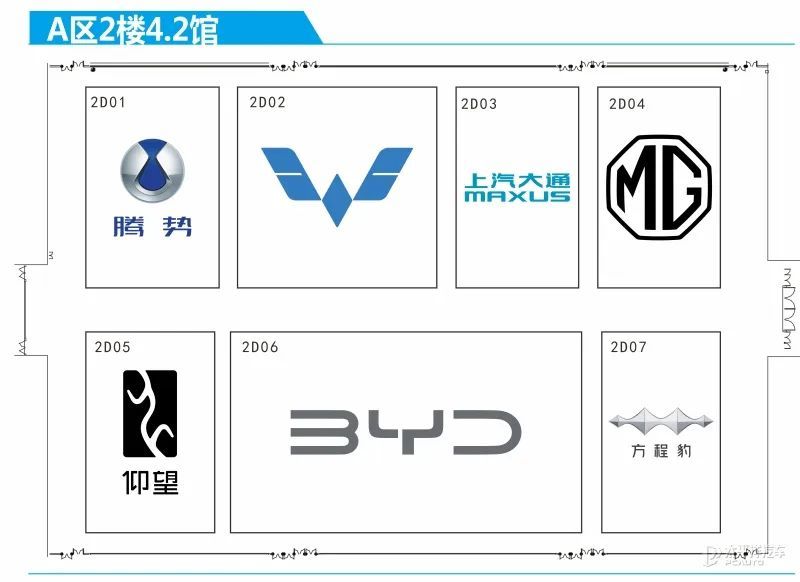

Tengshi D9 Four-seat Production Edition
At this year’s auto show, Tengshi D9 four-seat production version will be officially launched, while at the previous 2023 Shanghai Auto Show, Tengshi D9 PREMIER four-seat founding version has been officially unveiled, so we can also learn some highlights of the four-seat production version first. The new car adopts a four-seat custom design, and the exterior interior is different from the ordinary version of D9. The original version of D9 has been accepted, and the new car is expected to be officially delivered in the first quarter of 2024.



The four-seat appearance of the founding edition of D9 PREMIER maintains the design of the ordinary edition, and it is full of gas field. The original version has its own body color-bright purple, which will show different color changes when the body is in different lighting environments. At the same time, the roof and tailgate are matched with beige metallic paint.

The interior color matching also adopts the design style of "double spelling", and the matching color matching of purple and beige is customized. The design of the front inner cabin is also consistent with the ordinary version. The official said that the four seats of the original edition of D9 PREMIER adopted the PREMIER high-definition smart cockpit. The central control big screen is equipped with Tengshi Link super-intelligent interaction, which supports ten scenario modes such as Tengshi SHARE multi-screen sharing and nap mode, customized game car mode, OTA upgrade and so on.


The essence of the original version of D9 lies in the second row. The third row of seats was removed and the rear cabin was changed into two seats, which greatly improved the space performance. Two independent and spacious seats integrate a variety of comfort functions, and the rear cabin and the front row are separated by a large display screen, and all designs are based on a sense of dignity. In addition, users of the founding edition will have three exclusive privileges, namely, creating peers together, communicating together and sharing win-win, and seven exclusive founder privileges, including "Mr. Wang personally signed the car model, exclusive butler and exclusive partner privileges".
In terms of power, Tengshi D9 DM-i model is equipped with Xiaoyun-plug-in special 1.5T turbocharged engine. The NEDC with two-wheel drive has a pure battery life of up to 190km, and the fuel consumption is as low as 5.9L/100km;. The four-wheel drive model has a pure battery life of 180km, and the fuel consumption is 6.7L/100km. The pure electric vehicle CLTC has a maximum cruising range of 620km, and is equipped with two DC charging ports that can be charged at the same time. The maximum charging power is 166kW, and the cruising range can be supplemented by 230km in 15 minutes. The chassis adopts front McPherson and rear multi-link suspension structure, comes standard with FSD variable damping suspension system, and the high-equipped models also provide Disus-C electronically controlled damping shock absorption, which can realize millisecond intelligent soft and hard adjustment and further improve comfort.
Wuling xingguang PHEV
Wuling Starlight, Wuling’s first car, will be pre-sold at Guangzhou Auto Show. The PHEV plug-in hybrid model will be the first to be pre-sold, and will be listed at the end of November or early December. The future price may be around 100,000 yuan.

In terms of appearance, Wuling Xingguang adopts the brand-new design language of Wuling family, and its front face is very advanced, which has a sense of sight of luxury cars. It is hard to believe that this is actually from Wuling’s hands. I have to say that Wuling’s design transformation is very successful. Among them, the pure electric version is designed with a closed middle net, and adopts split headlights. The headlight group is very slender and sharp, with a very sporty front surround, which has great visual impact. The plug-in version is equipped with star-ring daytime running lights and similar lattice air intake grille, which looks more exquisite.

On the side of the car body, the car body lines are very rich, and it adopts a slip-back shape, equipped with hidden door handles and 18-inch star wheels, which is very sporty. In the rear part, Wuling Starlight adopts the popular through taillight group design, and its shape is relatively unique, which has high recognition after lighting. In addition, both sides of the rear enclosure are decorated with matte decorative strips, which enhances the sporty atmosphere. In terms of size, the length, width and height of Wuling Starlight are 4835/1860/1515mm and the wheelbase is 2800mm respectively, which has reached the standard of medium-sized cars and can be compared with BYD Seal and Deep Blue SL03.


According to the official map, Wuling starlight interior adopts color matching design, providing two interior colors of dark black and light sand color matching, which is simple and spacious as a whole, and double coating of leather and sponge is carried out for six high-frequency contact areas of the interior. Among them, the dual-screen layout is also a popular element. The dashboard is an 8.8-inch ultra-clear digital LED screen, and the 15.6-inch intelligent central control screen is the visual center of the whole interior, and it is equipped with rich social entertainment software such as iQiyi and QQ music, which can create a home theater cockpit atmosphere. After further reducing the physical buttons, most central control functions will be integrated into the central control screen.

There are two USB ports in the front and rear rows of the new car, and the charging power can reach up to 20W, which supports fast charging. There are 6 air outlets in the back of the seat, equipped with ISOFIX child safety seat interface. In terms of storage space, Starlight has set up more than 14 storage spaces in the whole car, and the front row adopts double-layer structure, which makes the storage space richer and more convenient to store. The trunk has a basic volume of 540L, which can easily accommodate two 24-inch plus two 20-inch suitcases. There is also a 33L hidden storage compartment under the trunk carpet, so the owner’s private belongings can also be properly kept.

In terms of seating space, the new car has a unique "recliner design". The front seats can be laid back 180 to be flush with the rear seat cushion to form a recliner, so you can enjoy an immersive "lying flat" leisure time during long-distance travel; The back aisle is 390mm wide, and the longest leg space is 1 meter. The sitting posture in the back row can be freely played without restriction.

Starlight "embracing and relaxing pressure" seat is ergonomically designed, and the soft area and hard area are divided by double hardness foaming process, and the fitting area between the seat and human body is as high as 110000 mm; The sides of the seat are also designed with strong support, and the head and neck area is supported by recessed embedded support, giving consideration to support and comfort as a whole; The new car is equipped with 6-way electric adjustment of the main drive.

In terms of power, the pure electric version will be equipped with a motor with a maximum power of 100 kW; The plug-in hybrid version will be equipped with a plug-in hybrid system consisting of a 1.5L engine and a motor, in which the maximum power of the engine is 78 kW.
BYD Sea Lion 07
A few days ago, the design manuscript of its brand-new model Haishi 07 EV was obtained from BYD official. The new car is a member of Ocean Net series, positioning pure electric SUV, based on E platform 3.0, and adopting cross-border design. It is reported that the car will make its world debut at the Guangzhou Auto Show, which opened on November 17th.

In terms of appearance, BYD Sea Lion 07 EV was created by the design team led by BYD’s global styling director Wolfgang Eiger. Based on the success of marine aesthetic design, it presents us with the essence of a new generation of styling design. The front face continues the design of the Ocean X concept car. Based on the X-shaped structure with mysterious marine temperament, the sharp line cutting enriches the layering and three-dimensional sense of the front of the car, and is connected with the headlights on both sides, stretching the visual width of the front face.

On the side of the car body, the Sea Lion 07 EV adopts a slip-back shape, and the beautiful and smooth curve of the roof extends to the rear of the car, forming a modern and fashionable design, which makes the car body more elegant. The rising shoulder line is matched with the unique large-size wide-body wheel eyebrows and five-spoke wheels, showing a strong sense of movement.

At the rear of the car body, it is equipped with the popular through taillight design, and the drooping shapes at both ends show the surface tension of seawater, which skillfully integrates marine elements and echoes the front face. In addition, rich straight lines and flexible curves are intertwined, which constitutes a strong visual impact.
In terms of power, Haishi 07 EV is built based on BYD e platform 3.0 and driven by pure electric power. Referring to the power layout of BYD Seal EV, Haishi 07 EV is expected to provide two kinds of power: single-motor rear drive and dual-motor four-wheel drive.
In addition, it is worth mentioning that it is learned from relevant channels that all SUVs under the Ocean Net series are grouped under the sea lion, and all cars are grouped under the seal, and the warship series will be gradually cancelled. In the future, the IP of the Ocean Net will be seagull, dolphin, seal and sea lion respectively, which means that BYD brand will launch models such as Sea Lion 05 and Sea Lion 09 in the future.

Zone a hall 5.1
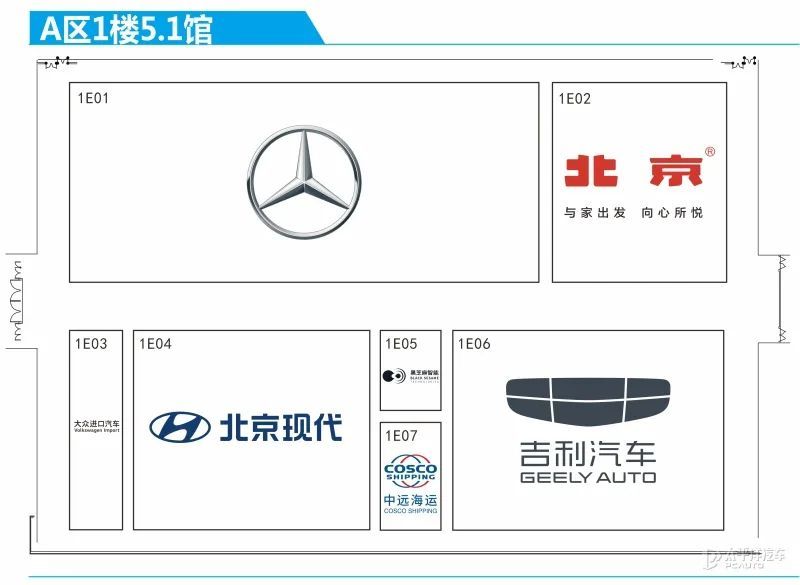

Beijing Benz Long Wheelbase E-Class
A new generation of domestic Mercedes-Benz E-Class long wheelbase version will be officially launched at Guangzhou Auto Show. The new car is built on the same MRA2 platform as Mercedes-Benz S-Class, and continues to provide double-body design, equipped with the third-generation MBUX system, built-in Snapdragon 8295 chip, and the first L2+ navigation-assisted driving system. On the basis of luxury, the intelligent experience is greatly increased, and the comprehensive strength is greatly improved.


In terms of appearance, the Mercedes-Benz E-Class long wheelbase version continues the design of the overseas wheelbase version, adopts the latest family-style design style, and incorporates the design elements of the pure electric EQ series, making it look like a strong new energy vehicle style. The new car offers two appearance versions to choose from, namely, the "big standard" which focuses on sports and the "vertical standard" which focuses on luxury administration. The difference is mainly reflected in the interior shape of the grille and the front enclosing style, which style is better depends on people.


On the side of the car body, the design of short front suspension and long rear suspension is still adopted. The car body lines are straight and stretched, and the visual effect is very elegant. The drag coefficient is as low as 0.23Cd. At the same time, a brand-new style of wheels has been replaced, which increases the recognition of the side of the new car. In terms of body size, the length, width and height of the new long-wheelbase E-Class are 5092/1880/1493mm and the wheelbase is 3094mm respectively. In contrast, the length, width and height of the new Mercedes-Benz E-Class standard wheelbase version are 4949/1880/1468mm and the wheelbase is 2961mm, respectively. Except for the body width, other parameters have been improved. In addition, for comparison, the length, width and height of the current long-wheelbase Mercedes-Benz E-Class are 5078/1860/1480mm and the wheelbase is 3079mm, respectively.


For the rear of the car, the taillights have adopted a brand-new design. Although the current popular penetrating taillight design is not adopted, a chrome trim is used to connect the taillights on both sides to create the effect of penetrating taillights. At the same time, the internal structure of the taillight adopts the shape similar to the brand LOGO, and the recognition degree is directly full after lighting.

In terms of interior, the new wheelbase version of E-Class did not continue the design language of Mercedes-Benz S-Class and mercedes benz c-Class, but borrowed from the design of Mercedes-Benz EQS, and adopted a three-screen center console layout called "MBUX Super Screen" by Mercedes-Benz, consisting of a 12.3-inch full LCD instrument panel, a 14.4-inch central display screen and a 12.3-inch passenger entertainment screen, and equipped with a three-spoke multi-function steering wheel in the style of "Dragonfly"

In addition to the visual shock, the new car is also equipped with the third-generation MBUX intelligent human-computer interaction system, and is built with the latest generation 8295 intelligent cockpit chip from Qualcomm. Compared with the 8155 chip, its GPU performance is improved by 2 times and 3D rendering performance is improved by 3 times, which can provide faster communication services.
At the same time, the new car has upgraded the brand-new "Mind Reading Voice Assistant" function, which is more accurate in recognition and faster in response. It supports the whole scene without waking up, improves the response speed, colloquial language and multi-command recognition, and can also control the vehicle through voice. For example, if you say "Start Smart Parking", you can turn on this function directly.

In addition, the new long-wheelbase E-Class is also equipped with L2+ class driving assistance system, which can cover high-speed and urban expressway sections, and has the ability to realize high-speed point-to-point navigation assistance driving, and has the functions of automatically changing lanes, automatically leaving the cart, and automatically entering and leaving the ramp.

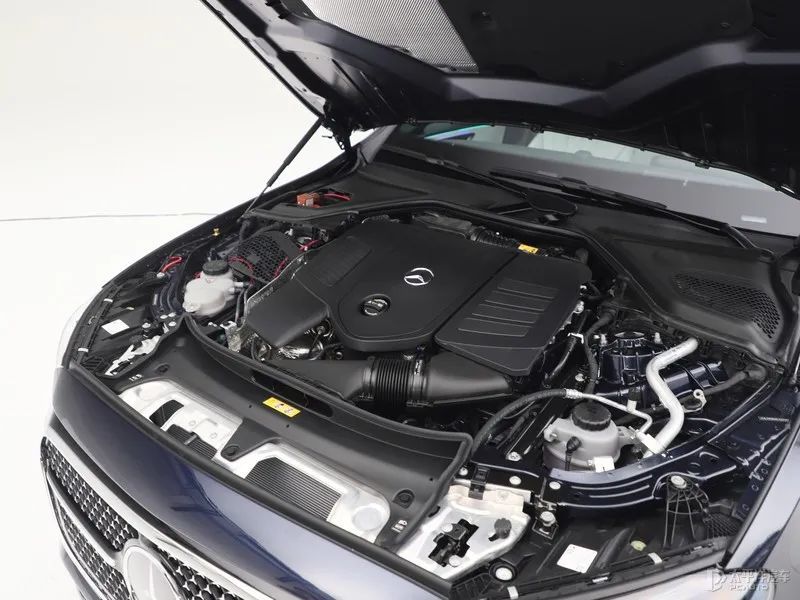
In terms of power, it was not introduced at the press conference, but according to the previous application information, the domestic long-axis model will be equipped with M254 2.0T engine, which is divided into high and low power adjustment, and the maximum power of the E 260 L model is 204 horsepower; The maximum power of the E 300 L model is 258 horsepower, the transmission system is matched with a 9-speed automatic manual transmission, and some models are equipped with a four-wheel drive system.
It is expected that a 48V light mixing system will be added to the whole system, and the second generation ISG starter/generator will be used, which can provide an additional 23 horsepower and 205 Nm of assistance to achieve better power responsiveness and fuel economy. The acceleration time of low-power models is 7.5 seconds.

In addition, it is worth mentioning that in order to meet the demand of new energy market, the new E-Class has also launched two plug-in hybrid versions, E 300 e and E400 e, in overseas markets. Both cars are equipped with the fourth generation plug-in hybrid technology of Mercedes-Benz, and the plug-in hybrid system consisting of 2.0T engine, drive motor and battery has comprehensive power of 313 HP and 381 HP respectively, and the 0-100km/h acceleration is 6.4 seconds and 5.3 respectively.
Its battery capacity is 25.4 kWh, and the cruising range of pure electricity is over 100 kilometers under WLTP working conditions, and the battery can be charged from 0% to 100% in about 30 minutes through 55 kW DC fast charging. It is expected that the domestic market will be introduced in the future to further enhance the product matrix.
New Mercedes-Benz CLE coupe
The brand-new Mercedes-Benz CLE coupe will be officially launched at Guangzhou Auto Show. As a new product combining mercedes benz c-class coupe and E-class coupe, Mercedes-Benz CLE inherits the beautiful body structure of coupe, which has a hardtop version and a convertible version, and the wheelbase reaches 2865mm, which is more advantageous than competitors such as BMW 4 Series and Audi A5.

Mercedes-Benz CLE and C-Class are "close", but the front face is more like CLA coupe, and the internal DIGITAL LIGHT headlights make the new car look radiant. The iconic trapezoidal air intake grille is embedded with lattice starlight decoration, and it has spread to the bumper area below, while the design of diffusers on both sides and the lower air intake continues the latest Mercedes-Benz design style, which is believed to be very familiar to all friends who pay attention to Mercedes-Benz.



Mercedes-Benz has been an expert in shaping elegant sports cars for decades, and coming to CLE is no exception. The target group of this kind of urban fashionable sports car is mostly hedonistic buyers, so the side of the new car doesn’t need to behave like a common medium-sized car. The long hood, steep windshield and drooping tail are all attractive physical characteristics of CLE. In terms of body size, the length, width and height of CLE are 4850mm/1860mm/1428mm, and the wheelbase is 2865 mm. Compared with domestic C-class cars, the length and height data are reduced, but the width is 40mm, so it is more flat and beautiful in proportion. The transition of the rear surface is very smooth. The LED taillights with new contours have a three-dimensional structure inside, and can also provide a light show to welcome and bid farewell to passengers. The middle parts of the taillights on both sides are connected by crimson decorative plates. However, Xiao Bian also thinks that viewing CLE from the rear 45 is somewhat similar to that of the British and finidi Q60 coupe.

When we came to the interior, CLE also continued the concept of luxury yacht. I believe everyone will be familiar with the 12.3-inch LCD dashboard and 11.9-inch OLED touch vertical screen. In order to facilitate the operation, the central control screen is also slightly tilted to the driver by 6 degrees. In addition, the details of the entire central control design can also be seen from the new C-class, including the radian corner of the decorative board, the air conditioning outlet inspired by the aircraft turbine, etc. Such details can make passengers feel Mercedes-Benz’s deep understanding of the luxury cockpit.

Mercedes-Benz’s front integrated sports seat specially designed for CLE coupe and convertible coupe provides 7-zone massage function. Pull the elegant Nappa leather pull ring, and the new "EASY-ENTRY" function can fold the front seat forward, which is convenient for passengers to enter the rear space calmly. The 64-color active ambient light provides a variety of ambience themes. The Burmester Voice of Berlin 3D surround sound system is equipped with two speakers at the headrest position of each seat. The total number of speakers in the whole car is 17 with Dolby panoramic sound to restore the ultimate acoustic effect.

The new CLE coupe and convertible coupe provide sports suspension system, which can reduce the body height by 15mm. In addition, the new car also provides an active steering system for rear wheels, as well as intelligent driving assistance functions such as intelligent navigation distance limit, active lane keeping, speed limit assistance and intelligent parking.
In terms of power, Mercedes-Benz CLE shares the powertrain with the current C-Class, providing different gasoline and diesel versions such as CLE 200, CLE 300, CLE 300e, CLE 220d, CLE 450 4MATIC, etc., with a 48V light mixing system as standard. Among them, the most powerful version is CLE 450 4MATIC, equipped with a 3.0L straight six-engine (code M256 M), with a maximum power of 280kW(381HP), a peak torque of 500N·m and an acceleration time of 4.4 seconds from 0 to 100 km/h. It is reported that Mercedes-Benz will also launch the plug-in hybrid AMG version of CLE in the future, which is expected to be equipped with M256 3.0T engine with a maximum power of 435 HP and a peak torque of 560 Nm. CLE 63 is a plug-in hybrid version, and it is expected to adopt a plug-in hybrid system consisting of the same 2.0T turbocharged four-cylinder engine and motor as AMG C 63.
Yinhe E8
We learned from the official office of Geely Yinhe that the Geely Yinhe E8 will be unveiled at the Guangzhou Auto Show, which will open on November 17th. The new car is the third model of Geely Yinhe brand and the first model of "Smart Pure Electric E Series". It is built on the vast structure of SEA, adopts a brand-new design style, is equipped with an ultra-wide 45-inch 8K unbounded smart screen, and is equipped with Qualcomm’s fourth-generation car cockpit chip Snapdragon 8295.

In terms of appearance, the biggest highlight of Geely Galaxy E8 is the adoption of the world’s first mass-produced integrated luminous front face, which can present rich luminous effects such as welcoming farewell, flowing water, jumping water and music show.
Geely Yinhe E8 is also equipped with AGS active air intake grille, and with 25 low wind resistance designs such as low wind resistance closed pneumatic rims, the wind resistance coefficient of Geely Yinhe E8 is only 0.199cd..

In terms of body size, the length, width and height of Geely Yinhe E8 are 5010/1920/1465mm and the wheelbase is 2925mm, which is similar to that of BYD Han EV as a whole.

For the interior, Geely Galaxy E8 is equipped with an exaggerated 45-inch Dalian screen, with a length of 1.157m and a height of 0.159m, an image resolution of 8K, and an effective display area of 1130mm * 138mm, which is the widest among the current production models.

At the same time, the new car is also equipped with a new generation of Qualcomm Snapdragon 8295 flagship cockpit chip and a brand-new car system. The chip adopts 5nm process technology, and the 3D rendering performance of GPU is improved by 3 times compared with that of 8155, and the GPU is improved by 2 times, and the AI computing power is even more terrible at 30TOPS, which is 7.5 times that of 8155 chip.
In terms of configuration, Geely Galaxy E8 will be equipped with 256-color atmosphere, electric suction door, 50W mobile phone wireless charging, 25.6-inch AR-HUD head-up display, Harman INFINITY hi-fi 12 sound system, FACE ID face recognition and car fragrance system.

In terms of power, the application information shows that the new car will be equipped with an electric motor provided by Weirui Electric Vehicle Technology (Ningbo) Co., Ltd., with a maximum power of 200 kW.

Zone a hall 5.2


Dongfeng Nissan Pathfinder
The 2023 Guangzhou Auto Show is about to kick off, and our front team captured the Dongfeng Nissan Pathfinder model around the exhibition hall. This new car will make a cool debut at this auto show, and has been declared by the Ministry of Industry and Information Technology.

Dongfeng Nissan Pathfinder has a wheelbase of 2900mm, a grand body size and a stylish overall shape. In terms of appearance, the new car adopts the latest family-style front face design, and the large-size front grille is integrated with horizontal chrome trim, which is skillfully integrated with the headlights on both sides. The three-stage air intake design adds a sporty atmosphere and makes the appearance of the vehicle more dynamic.

The side lines of the car body are steady and smooth, and the waistline running through the front and back highlights the sense of strength. The tail shape is unique, and the long and narrow headlight group is perfectly integrated with the black plaque and brand LOGO, showing a strong visual layering.

The size of the new car is huge, with the length, width and height of 5130/1981/1767mm respectively. In the mass production version, the overall design language of the interior is the same as that of the concept car, but the details are slightly different. For example, a large number of soft coverings are still retained, and the stepped double screen design similar to Ariya is full of scientific sense. The slender air conditioning air outlet, clean and tidy horizontal layout center console and three-position steering wheel similar to the current Qijun all follow the design of the concept car. Seats are expected to remain comfortable and thick, with exquisite materials, and six/seven different layouts will be provided for you to choose from.

However, in terms of power, the curb weight of this medium and large SUV has reached 2132kg, and it seems that it is only equipped with a 2.0T turbocharged engine with a maximum output of 185kW(252Ps). This SUV is slightly conservative in the power system. Considering that Pathfinder is a sister model of QX60 in Britain and finidi in overseas markets, this 2.0T engine is likely to be the same model as QX60. According to the previous test drive experience of QX60, although this power system is not enough to dominate the road, its performance is quite flexible and light in daily car scenes.
Lotus EMEYA
Recently, Lotus announced that its brand-new pure electric supercar Emeya will be released at Guangzhou Auto Show. The design of the new car reproduces the design aesthetics of Lotus’ early iconic mid-engine sports car, adding the exclusive supercar pore design language, suspended double-layer tail technology, etc., and the acceleration of zero hundred is 2.78 seconds. In addition, Lotus will also release a road bike with electric power-Type 136. The overall weight of the car is only 9.8kg, and the price will be officially announced at the Guangzhou Auto Show.

In terms of appearance, Emeya adopts a streamlined design, which perfectly combines aerodynamics and artistic aesthetics. Its shape is inspired by the classic super-running design of Lotus, and the layout of the mid-engine makes the center of gravity of the whole vehicle lower, providing a more stable driving experience. At the same time, the appearance of Emeya is also full of modernity. The unique LED lighting group and sharp lines make it eye-catching at night and during the day.

On the basis of following the iconic aerodynamic design of Lotus, Emeya has continuously innovated, and the whole vehicle has adopted the porous design constructed by four groups of Race-Aero aerodynamic ducts. This design allows airflow to pass through the car body, which reduces wind resistance and brings additional downforce, effectively improving the grip and handling performance of the vehicle on the track and on the road. At the same time, this design also improves the vehicle performance, battery cooling and endurance, and further enhances the visual impact of the appearance.

The front of the car body is equipped with an active air dam and an active air intake grille for the first time on the pure electric supercar SUV Lotus Eletre. Active air dam can increase the downforce when driving at high speed, thus improving the accuracy and stability of handling, and making Emeya a car that can stimulate driving desire. The active air intake grille can be closed when the wind resistance needs to be reduced, improving the energy efficiency of the vehicle; When it is necessary to cool the electric drive system and brake system, it is turned on, and air is sucked to dissipate heat.

Aerodynamic kits such as active rear diffuser and active tail wing are adopted at the rear of the car body to further enhance the stability of the rear of the car and bring unparalleled handling performance and driving stability to the driver. The design of the active rear diffuser is inspired by racing, which can effectively avoid the turbulence under the car. The industry-leading active double-layer tail wing, with a width of 296 mm, can provide a net downforce of more than 215 kg, and cooperate with the active rear diffuser to give drivers a more stable handling feeling when driving at high speed.

In addition, Emeya is equipped with an advanced air suspension system, which can automatically adjust the height and damping of the car body according to the driving mode. This system provides drivers with a more comfortable and stable driving experience, and also enhances the handling performance and driving stability of the vehicle. The 50:50 axle load ratio design allows the vehicle to have both sports and comfort.

In the interior, Emeya adopts advanced materials and exquisite craftsmanship to create a comfortable and technological driving environment. The center console and seats are made of luxurious leather with delicate touch; The dashboard and the central control screen use high-definition LCD screens, providing a more intuitive and convenient driving experience. In addition, Emeya is equipped with advanced driver assistance system, including automatic parking, adaptive cruise and other functions, which makes driving easier.
The materials used in the new car use a lot of world-leading advanced environmental protection materials, including durable new recycled fiber wires and many luxurious materials. PVD coating is added to the contacts of the cabin interior of Emeya, which brings a unique color and a warm touch on the fingertips.
Eletre’s penetrating ultra-thin instrument panel is also mounted in the Emeya cockpit. The instrument panel is made of lightweight materials and streamlined design, which not only has high adaptability, but also has the capabilities of super charging, high energy saving and extremely fast data transmission.

Emeya has an intelligent partition PDLC panoramic canopy, which can be divided into 10 controllable partitions according to demand, showing a variety of personalized canopy shelter driving, with an overall area of 2.4㎡.

In terms of performance, Emeya is equipped with an efficient motor and battery pack, which provides powerful power output and endurance. It is reported that Emeya’s 0-100km/h acceleration time is only 2.78 seconds, and the top speed can reach 250km/h, which is comparable to the top fuel supercar. In addition to the first time, the new car is equipped with a 10-piston carbon ceramic compliant braking system, which reduces the braking distance of 100 kilometers to less than 33 meters.

In addition, the cruising range of Emeya is also considerable. According to different configuration versions, the maximum cruising range can reach more than 500 kilometers. In terms of charging, the new car is equipped with Lotus’s leading flash charging technology EPA 800V high-performance architecture, with a maximum charging power of 480kW. It only takes 5 minutes to charge to increase the cruising range of 180 kilometers (under CLTC standard). In fast charge mode, the power can be increased from 10% to 80% within 15 minutes.

Hall 17.2, Floor 2, Zone D
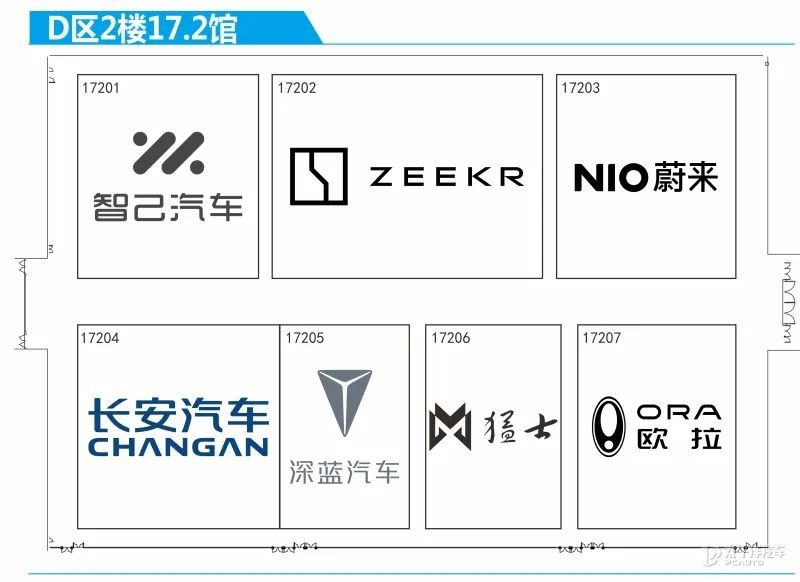

Extreme krypton 007
On November 15th, Krypton officially announced the official interior map of its brand-new car, Krypton 007. The new car is produced on the PMA2+ platform under the vast structure of SEA, which is the same platform as Geely Galaxy E8. It is reported that the new car will also be equipped with 8295 chips and high-order intelligent assisted driving system, and will be pre-sold at the Guangzhou Auto Show, which will open on November 17.

From the official map, the interior of Krypton 007 continues the family-style design, and has not undergone drastic changes like the appearance. The overall style is simple and fresh, with an oversized suspended central control panel and a double-spoke flat-bottomed steering wheel, and the design is similar to the design of Krypton X.

At the same time, the new car also adopts double color matching and double stitching design, the ceiling is made of Microfiber microfiber, and the seat is Soft Nappa full-grain leather, which adds a luxurious atmosphere inside the car. In addition, in terms of details, the new car is also equipped with metallic coat hooks and luxury glasses boxes, with exquisite details all over the cabin, showing the ultimate.

Looking back at the appearance, Kyk 007 adopts a minimalist design style, led by Stefan Sielaff, the world’s top designer, with a rounded front face, equipped with the industry’s first 90-inch ultra-wide display area ZEEKR STARGATE integrated smart light curtain, which supports the customization of light language and is equipped with a luminous brand LOGO to further emphasize the sense of science and technology.

The side of the car body is simple, with a slip-back shape, a hidden door handle and large-size petal-shaped wheels, and the visual effect is very advanced. The rear of the car is designed with penetrating taillights, which has good recognition after lighting.
In terms of body size, the length, width, height and wheelbase of Krypton 007 are 4865/1900/1450mm and 2928mm, respectively, which is slightly smaller than that of Tesla Model 3 and similar to that of Tucki P7 and Weilai ET5 on the whole.

In addition, the roof of the polar krypton 007 is also equipped with a lidar, which is expected to be equipped with a high-order intelligent assisted driving system. At the same time, it is understood that the new car will adopt double wishbone front independent suspension, equipped with 800V electrical architecture, Snapdragon 8295 chip and so on, and its comprehensive strength is very strong.
According to the positioning of Krypton 007, combined with the price of Krypton 001 (with a limited price of 269,000 yuan) and Krypton X (with a price range of 1898-229,800 yuan), it is estimated that its price may be between 210,000-260,000 yuan, and there is a high probability that it will overlap with Geely Galaxy E8. How to choose it is another big problem. Of course, we’ll see what the specific pre-sale price is on November 17th.

Hall 18.2, Floor 2, Zone D
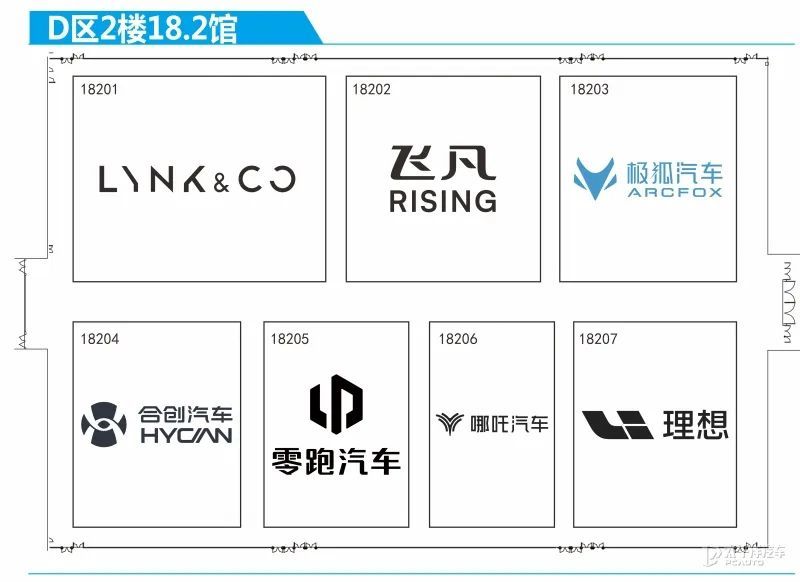

Zero run C10
As the Guangzhou Auto Show is about to kick off, our front team successfully photographed the figure of Zero Run C10 around the exhibition hall. At the Munich Auto Show in 2023, Zero Run has officially released its first model C10 for the global market. Based on the "four-leaf clover" central integrated electronic and electrical architecture, the car provides two power options: extended range and pure electricity, and is equipped with laser radar, which is expected to have high-order assisted driving ability. At this Guangzhou Auto Show, Zero Run C10 will unveil the mystery of interior design.



The Zero Run C10 continues the family-style design concept, with a penetrating light strip and a wide front enclosure shape, with a trapezoidal radiator below, and the corners on both sides are more powerful. The car side profile is smooth, the car window frame is equipped with black highlights, and a hidden door handle and a 20-inch rim are used.


The rear of the car is equipped with a penetrating light strip, and the taillight design has been optimized to be more recognizable. In addition, spoiler and duckling tail are added to the tail. There is a laser radar on the roof, and several cameras on the front fender and exterior rearview mirror. It is expected that the car will support high-order driving assistance functions.

The whole vehicle is equipped with 30 auxiliary driving hardware, including 12 cameras, 5 millimeter-wave radars, 12 ultrasonic radars and 1 laser radar, which can support urban/high-speed NAP navigation and expand to L3 intelligent driving capability through OTA upgrade.

In the future, the new products of the zero-run car will apply the 800-volt platform silicon carbide technology and provide three oil-cooled electric drive technologies. The maximum power of a single motor is from 170 kW to 250 kW, and the peak torque is from 320 Nm to 360 Nm. In the future, the zero sports car will also adopt CTC 2.0 (battery body integration) technology, which is compatible with 800 V /4C overcharge technology, and the battery life will increase by 200 kilometers after charging for 10 minutes.
Ideality MEGA
Since Li Xiang, CEO of Ideal LI, published the official map of Ideal MEGA on personal social media, this ideal first MPV has been controversial. The main reason is that it looks like a high-speed rail, which can ensure the space, and it can also be comparable to the drag coefficient of a car. Therefore, under the blessing of this design topic, there is also a hot sale of the L series in the early stage. Even if consumers have not seen the real car, Ideal will receive a large wave of booking orders.

Compared with the traditional MPV, the ideal MEGA has a unique styling style, with very smooth body lines and bullet-like styling like high-speed rail, which is officially described as "high-speed rail". The biggest advantage of this design is to improve the aerodynamic performance of the vehicle, but also to add a high-end, fashionable atmosphere for the vehicle and strengthen the recognition. The wind drag coefficient is only 0.215Cd, breaking the record of mass production MPV and becoming the lowest MPV in the world. Then what is the concept of drag coefficient of 0.215? Comparing with several popular new energy cars, the drag coefficient of Weilai ET7 is 0.208, the drag coefficient of dark blue SL03 is 0.23, and even the drag coefficient of Tesla Model 3 and Porsche Taycan is 0.22Cd, while the drag coefficient of Krypton 009, both MPV, is 0.27Cd. Then the wind resistance of an ideal MEGA with such a large size can be comparable to that of a pure electric car.
The advantage of low drag coefficient is mainly reflected in energy consumption control. For every 0.01Cd reduction in drag coefficient, CLTC’s pure electric cruising range is increased by 7 kilometers (under the same circumstances), while MPV is always difficult to break through because most of the vans are designed. Then the comprehensive power consumption of the ideal MEGA and CLTC with dual-motor four-wheel drive series is only 15.9kWh/100km. Similarly, for comparison, the energy consumption of Krypton 009 is 18.3kWh/100km, and the potential D9 is 18.4kWh/100km.


In terms of body size, the length, width and height of the ideal MEGA are 5350/1965/1850mm and the wheelbase is 3300mm, which is larger than the medium and large MPVs such as Tengshi D9 and Extreme Krypton 009. In terms of space, the depth of the trunk of the new car is 680mm in the state of 7 seats, and the three rows of seats have electric folding function. After folding, the depth of the trunk is 1066 mm. Compared with Krypton 009 and Tengshi D9, the body length and wheelbase of the ideal MEGA have obvious advantages.

Under such low wind resistance endurance performance, I believe there will be good performance in endurance. The ideal official said that the ideal MEGA will be equipped with an 800V high-voltage fast charging platform, equipped with a 5C Kirin battery, with a battery capacity of 102.7 kWh and a pure electric cruising range of over 700km under CLTC conditions. At the same time, its charging power can reach up to 500 kilowatts, and it can last 500 kilometers for 12 minutes.
Secondly, in terms of power, the ideal MEGA will be equipped with a dual-motor four-wheel drive system, and the front axle is an asynchronous electric motor with a maximum power of 155 kW; The rear axle is a permanent magnet synchronous motor, with the maximum power of 245 kW, the peak torque of 542 Nm, the comprehensive power of the system of 400 kW and the acceleration time of 100 km of 5.5 seconds. It will also be the ideal first pure electric vehicle. According to the official data, the ideal MEGA is likely to be a fast (accelerated) and long-lasting (endurance) MPV.

Hall 19.2, Floor 2, Zone D
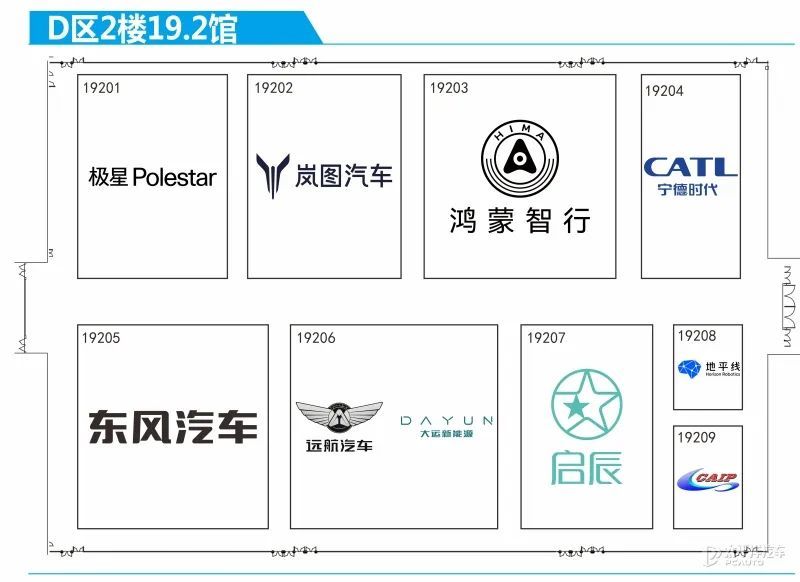

Lan tu Zhu guang PHEV
As the Guangzhou Auto Show is about to kick off, our front team successfully photographed Lantu Zhuguang PHEV around the exhibition hall, which will be officially pre-sold at the Guangzhou Auto Show. Compared with the current pure electric version, the new car is equipped with a plug-in hybrid system consisting of 1.5T and dual motors, equipped with a battery pack with a capacity of 43kW, with a pure electric battery life of 262km and a comprehensive cruising range of 1260km.


In terms of appearance, the main difference between the Lantu light-chasing PHEV model and the pure electric model is reflected in the front face. Due to the addition of the engine, the new car adopts a conventional front grille design, and the interior adopts a similar dot matrix decoration to increase the sense of exquisiteness, while the chrome-plated Lantu LOGO and the through-type light strip are also preserved.

The side of the car body adopts a slip-back shape, equipped with a hidden door handle, and at the same time, a slender chrome decoration is added above the side skirt, and a two-color multi-spoke wheel hub is replaced to emphasize the sense of movement. In terms of body size, the length, width and height of the new car are 5088/1970/1515mm and the wheelbase is 3000mm, which is consistent with the pure electric version.

The tail of the car body is designed with a penetrating taillight, and the internal shape is very exquisite. At the same time, in order to distinguish it from the pure electric version, a similar brake light design is added at the center of the taillight, showing the shape of Lantu LOGO. In addition, equipped with a more radical rear surround, it also adds a sense of movement.

In terms of power, the Lantu Chasing Light PHEV will be equipped with a plug-in hybrid system consisting of a 1.5T engine and front and rear dual motors, in which the maximum power of the engine is 100kW, the maximum power of the front and rear driving motors is 130kW and 160kW respectively, the comprehensive power of the system is 390kW, and the comprehensive torque is 790Nm.
In terms of battery life, it will be equipped with a ternary lithium battery with a capacity of 43 kWh. The pure electric cruising range of CLTC is 262km, and the comprehensive cruising range of CLTC is 1260km when it is fully charged with oil.
In addition, the new car is the only one in its class with all-aluminum chassis and equipped with CDC+ air suspension with magic carpet function, which can actively identify and scan road information, intelligently adjust suspension damping, and give consideration to comfort and sportiness. What’s more worth mentioning is that, in terms of safety, Lantu Chasing Light PHEV, which has not yet been listed, won the "Top Ten Bodies in China in 2023" award last week for its body-in-white performance.
Zhijie S7
It is learned from the official that the first pure electric car jointly built by Huawei Zhixuan and Chery-Zhijie S7 will officially open for pre-sale on November 9, and it is expected to be unveiled at the Guangzhou Auto Show. The new car is built on the brand-new electric platform E0X, which is the same platform as the Star Road Star Era ES, positioning medium and large-sized pure electric cars, equipped with HarmonyOS 4 intelligent cockpit and Huawei ADS 2.0 advanced intelligent assisted driving system.

In terms of appearance, Zhijie S7 adopts a brand-new design language, and the overall style is biased towards sports. The headlight group is similar in shape to Wenjie M9, and its recognition is very high. Whether it will be equipped with HUAWEI xPixel smart headlights remains to be confirmed. The side of the car body is very simple, without a slip-back design, equipped with hidden door handles, lightweight 21-inch double five-spoke wheels and Brembo brake calipers, showing a strong sporty atmosphere; The rear of the car is designed with penetrating taillights to increase the recognition of new cars.


In terms of body size, the length, width and height of Zhijie S7 are 4971/1963/1474mm and the wheelbase is 2950mm, which is much larger than that of Tesla Model 3.
Information about the interior has not been disclosed at present, but it is known that the new car will be equipped with 4(HarmonyOS 4 car engine system and Huawei ADS 2.0 advanced intelligent driver assistance system.
In terms of power, Zhijie S7 will provide single-motor two-wheel drive and dual-motor four-wheel drive models, of which the maximum power of the two-wheel drive model is 215 kW and the maximum power of the four-wheel drive model is 365 kW. In terms of batteries, it will be equipped with lithium iron phosphate battery+ternary lithium battery from Jiangsu Times.

In addition, it is worth mentioning that Yu Chengdong, Huawei’s managing director, terminal BGCEO and chairman of BU, a smart car solution, said in a low-key manner at the new product release of Huawei in autumn this year: the positioning of the intelligent S7 will surpass that of the Tesla Model S, which is indeed much lower-key than the title of "the best SUV within 10 million" of the intellectual M9.
Wen Jie M9
A few days ago, a group of interior spy photos about the world of inquiry M9 were exposed on the Internet. From the pictures, the world of inquiry M9 adopted a triple screen layout, equipped with a brand-new three-spoke steering wheel, and adopted a gear shift, which is obviously different from the current world of inquiry M5 and M7. The interior of the new car is expected to officially meet the masses at the Guangzhou Auto Show.
At the same time, the interior of the new car is decorated with a large number of leather materials, wood grain decorative boards and atmosphere lights, which enhances the luxury atmosphere inside the car.

In addition, according to the previous information, the passenger car M9 will also be equipped with HarmonyOS 4.0 cockpit, Huawei ADS advanced autopilot assistance, aurora projection in the rear row, and queen’s seat in the co-pilot.

In terms of power, Wenjie M9 provides extended-range and pure electric models, in which the extended-range model is equipped with a 1.5T four-cylinder range extender with a maximum power of 112kW, the maximum power of the front drive motor is 165kW, the maximum power of the rear drive motor is 200kW, and it is equipped with a 40.055kW ternary lithium battery pack with a pure electric battery life of 175km.
The pure electric version will be equipped with a dual-motor system, the maximum power of the front motor is 160 kW, and the maximum power of the rear motor is 230 kW. It will be equipped with a ternary lithium battery pack with a capacity of 97.682 kWh and a pure electric cruising range of 630km.

Hall 20.2, Floor 2, Zone D


Gaohe HiPhi A
On November 15, 2023, HiPhi A appeared on the eve of Guangzhou Auto Show, and then officially landed at the Auto Show on November 17. This car will be sold in limited quantities and is expected to be put into production and delivered in the first quarter of 2025.


HiPhi A combines the self-developed technology of Gaohe Automobile and Apollo’s top super-running elements, presenting a futuristic visual style. Carbon fiber material and matte spraying material complement each other, and the front and rear fenders of wide body and ultra-wide tires have strong impact force. The spatial layout subverts the tradition, with sci-fi passion in the front row and spacious and comfortable in the back row. The addition of HiPhi Bot multi-axis displacement robot shows the way of human-vehicle interaction in the digital age.


In terms of performance, the 0-100km/h acceleration of HiPhi A reaches 2 seconds, and the maximum speed is nearly 300 km/h. Based on the 800V platform, the high-power self-developed electric drive assembly has a peak power of 1305Ps. The motor is designed with ultra-high-speed carbon fiber rotor and matched with intelligent oil cooling technology to realize high-power long-time output.

In terms of material application, HIHIA applies aviation grade TC4 titanium alloy to automobile interior and exterior decoration in batches for the first time, and widely uses chassis parts such as high-performance aluminum alloy and nano-ceramics. The cooperation with the Intelligent Manufacturing System Center of Shanghai University of Science and Technology will promote the popularization of 3D printing technology in the automobile industry.

Luxury chassis configurations such as active rear wheel steering, CDC continuously variable damping shock absorber, track-grade carbon ceramic brake disc, etc., lay the foundation for the ultimate control of HIPA. It is equipped with the industry-leading torque vector control technology HVC to improve the handling performance in all directions.
Tucki X9
Compared with the ideal MEGA, the internal and external design of the Tucki X9 vehicle is completely open for everyone to see. It is the new flagship MPV of Xpeng Motors, and the new car will be officially opened for pre-sale at the Guangzhou Auto Show. He Xiaopeng once said that Xpeng Motors will use this model to open the "young" MPV market. In addition to the design will be more dynamic than the conventional MPV, there are also high-order intelligent driving and rear wheel steering blessing.

In order to meet He Xiaopeng’s claim that this is an MPV that opens to a "young state", the design is obviously different from the traditional MPV in business style, and the contour lines of the front and rear are more streamlined. The designer hopes to attract the favor of young consumers with this avant-garde design.
Family-style design language is adopted in the front of the car, the closed front face is equipped with penetrating LED headlights, and laser radars are arranged on both sides of the front enclosure; The side creates a visual effect of the suspended roof, which adds a sense of movement; The tail is full and round, equipped with through taillight design, with more three-dimensional lines, showing a certain sense of hierarchy.


The length, width and height dimensions of Tucki X9 are 5293/1988/1785mm and the wheelbase is 3160mm respectively. In terms of wheels and tires, the new car offers 19-inch and 20-inch wheels, and the tires are 235/55 R19 and 235/50 R20.

The layout of the interior is simple and simple, and the physical buttons are basically cancelled, leaving only the multi-function buttons on the steering wheel; In-vehicle functions are integrated into the large-size central control panel. It is worth noting that the central control panel supports split-screen display, while the co-driver is not equipped with a display screen. The air outlet of the air conditioner is designed with dense hollow holes, which is sci-fi; Due to the forward design of the front windshield, the front area of the center console is very large, which can theoretically make the front view more transparent.

In terms of science and technology, Tucki X9 will take the lead in carrying Qualcomm’s latest generation of 8295 intelligent cockpit chips, which will not only upgrade from 7nm process technology of 8155 chips to 5nm, but also greatly improve high-performance computing and AI processing. The NPU computing power for AI learning will reach 30TOPS OPS, which is 8 times that of 8155 chips. I believe that cockpit interaction will be qualitatively improved. In addition, X9 in Tucki will also be equipped with Xmart OS 5.0 system for the first time, which will adopt a brand-new interface (multi-tasking, customization), one-stop SR (improving driving safety and covering parking scenes), fully evolved voice interaction ability, no wake-up six-tone zone and access to GPT model.
XNGP intelligent assisted driving is also the strongest combination in Tucki at present, with dual NVIDIA Orin-X chips, maximum computing power of 508TOPS and dual laser radars. XNGP function can be used upon expected delivery.

2+2+3 "three rows of seats layout, the interior area of the car reaches 7.7㎡. Thanks to the large body size and excellent spatial layout, the head and leg space of the three rows of seats in the car are very prominent; The second row of the new car is designed with independent seats. The leather-covered seats are equipped with leg rests and independent handrails. The width of the central passage reaches 180mm and the height of entry and exit reaches 1315mm, which is convenient for the occupants in the car to enter and exit the third row.

The third row of seats also has a one-button electric storage function, which can form a fully flat trunk space after storage, which is convenient for loading large luggage items.

Tucki X9, like G9 and G6 in Tucki before, is built with Tucki’s soaring architecture and 800V high-voltage platform. It is estimated that 800V architecture will bring lower energy consumption performance and longer endurance. Tucki X9 will be available in single-motor and dual-motor versions. Among them, the maximum power of the motor after the two-drive version is 235kW. The maximum power of the front motor of the four-wheel drive version is 135kW, and the maximum power of the rear motor is 235kW. The new car will be equipped with rear wheel steering as standard, which will greatly improve driving flexibility. The battery is a ternary lithium-ion battery from Zhongchuang Singapore Airlines.

Ticket information
The 21st Guangzhou Auto Show will be held in the Canton Fair Exhibition Hall from November 17th, 2023 to November 26th, 2023. The exhibition area of auto parts and supplies, auto modification and new technology will be extended from November 17th to 20th, 2023.
November 17th, 2023 is Media Day, which is only open to domestic and foreign media and special guests. November 18-19, 2023 is the Professional Audience Day, and the ticket is 100 yuan; November 20-26, 2023 is a public day, and the ticket is 50 yuan. This year’s exhibition will continue to use real-name registration system certification and swipe the ID card to enter the exhibition. Visitors can complete ticket purchase, ticket activation and real-name authentication at one time through the official WeChat of Guangzhou International Auto Show.

At present, tickets for Guangzhou Auto Show are on sale. You can buy them in WeChat official account after paying attention to Guangzhou International Auto Show, providing electronic tickets and physical tickets, and supporting online payment by UnionPay and Alipay. Tickets are sold without refund or exchange. Please confirm that you can arrive at the exhibition site on the visit day of the corresponding ticket category before purchasing tickets. One ticket is limited to one person and valid once. There are no tickets for the elderly and children in the exhibition, and all visitors need to enter the exhibition with tickets.
Tickets for 100 yuan can be used on any day from November 20th to 28th.
Children under 1.4 meters are free of charge and need adult supervision, and they can only enter the venue with their ID cards.

Auto show public transportation
subway

Bus route
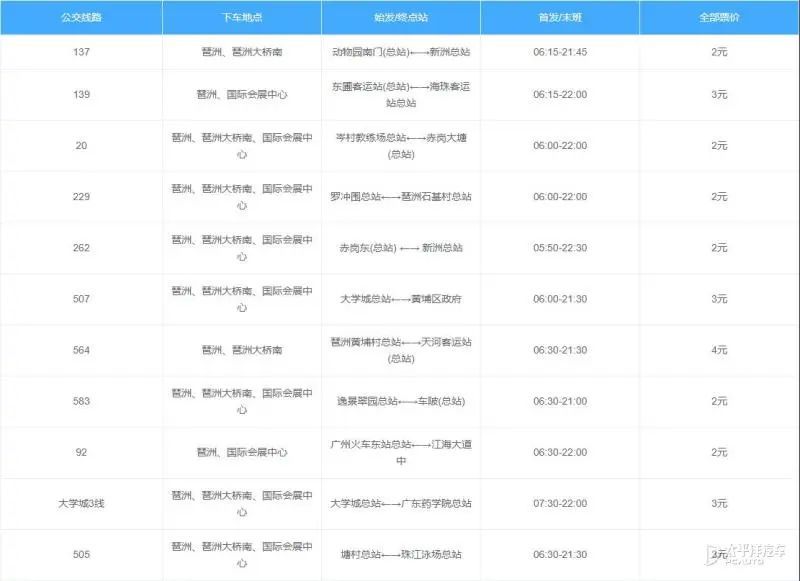
Airport to the exhibition hall
The Canton Fair Exhibition Hall is about 50 kilometers (driving distance) from Guangzhou Baiyun International Airport Terminal 1 and Terminal 2, and you can take the subway to the auto show site.
Guangzhou Baiyun International Airport Terminals 1 and 2-Canton Fair Exhibition Hall
Subway: the north extension of Line 3-transfer to Line 3 at Tiyu West Road Station-transfer to Line 8 at Kecun Station to Pazhou Subway Station.
Taxi: about 1 hour (when the traffic is smooth)
Guangzhou South Railway Station to the Exhibition Hall
The Canton Fair Exhibition Hall is about 23 kilometers away from Guangzhou South Railway Station (driving distance), and you can take the subway to the auto show site.
Guangzhou South Railway Station-Canton Fair Exhibition Hall
Subway: Line 2-take Changgang Station and transfer to Line 8-take Pazhou Subway Station.
Taxi: about 1 hour (when the traffic is smooth)
Travel by car
Self-driving spectators can park their vehicles in the designated parking lot of the Canton Fair Exhibition Hall. After parking, please record the parking lot and parking location and go to the exhibition hall according to the on-site guidance signs.
summary
There are quite a few heavy new cars worth seeing at this Guangzhou Auto Show. Regarding the first-hand hot spots of new cars at the auto show, we Pacific Auto Network will also send a group of professional editors to the scene to provide you with the freshest and hot auto show information at the first time, so please pay attention.






